Vertical gardening transforms ordinary walls and fences into lush, living tapestries, maximizing limited space while enhancing aesthetics and air quality. By growing plants vertically, you can cultivate flowers, herbs, vegetables, and ornamental greenery even in the tiniest balconies or urban backyards. Vertical gardens offer environmental benefits—improved insulation, noise reduction, and habitat creation for pollinators—as well as practical advantages like easier harvesting and reduced weeding. From DIY pallet installations to sleek modular systems, there’s a vertical gardening solution for every skill level and style. The following 20 ideas draw on creative designs and expert tips to inspire your next green project.
1. Climbing Vine Trellises
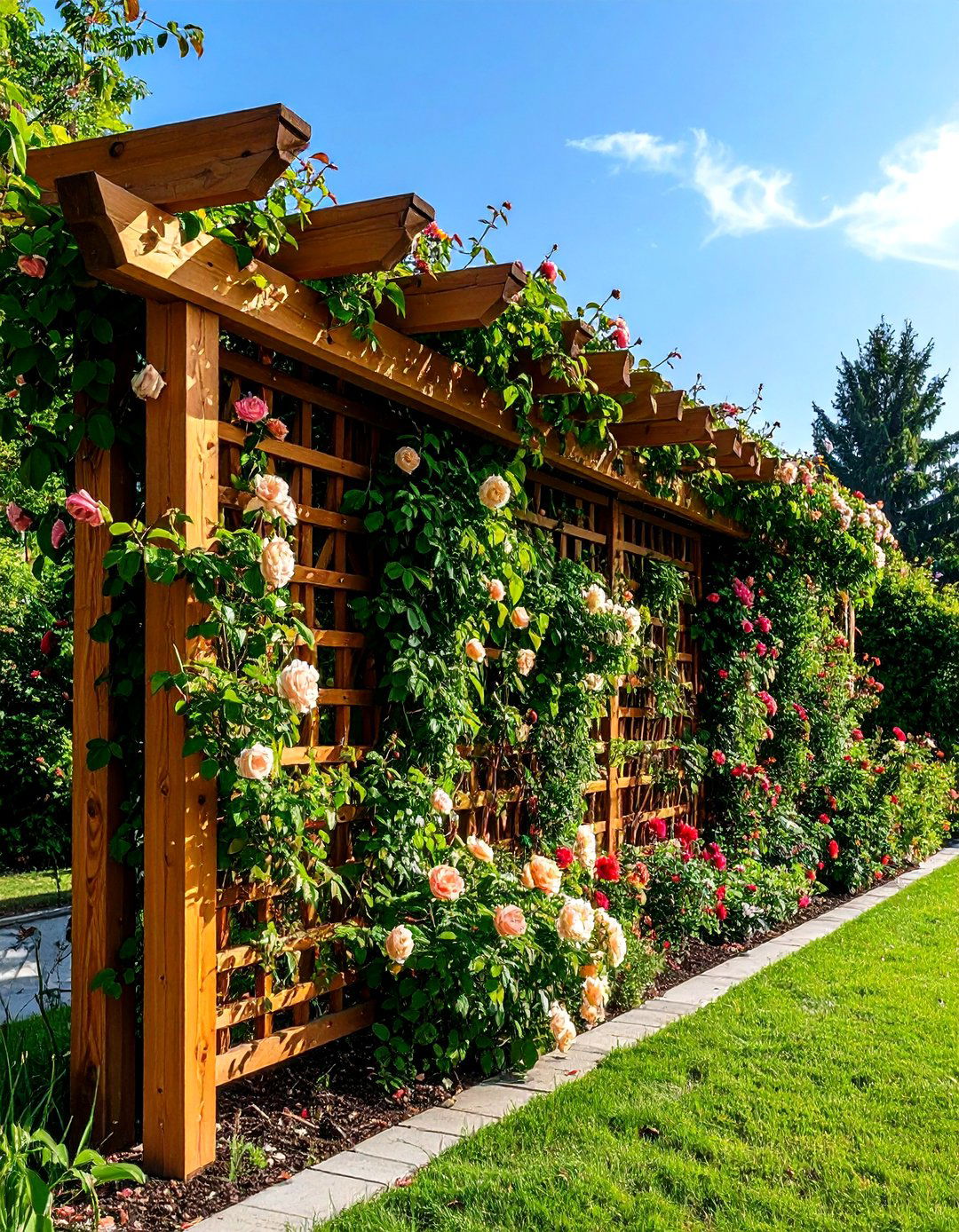
Climbing vine trellises provide a classic vertical garden structure, guiding plants like clematis, climbing roses, and jasmine skyward. Install a sturdy wooden or metal trellis against a sunny wall, ensuring it’s firmly anchored to support mature growth. Beginners can start with fast-growing annual vines such as sweet peas or morning glory for immediate coverage, while perennials establish over multiple seasons. To maintain health and shape, prune regularly and tie new shoots loosely to the framework. Vine trellises not only save ground space but also create fragrant, verdant screens that offer privacy, shade, and year-round architectural interest to any outdoor or indoor setting.
2. Modular Living Wall Panels
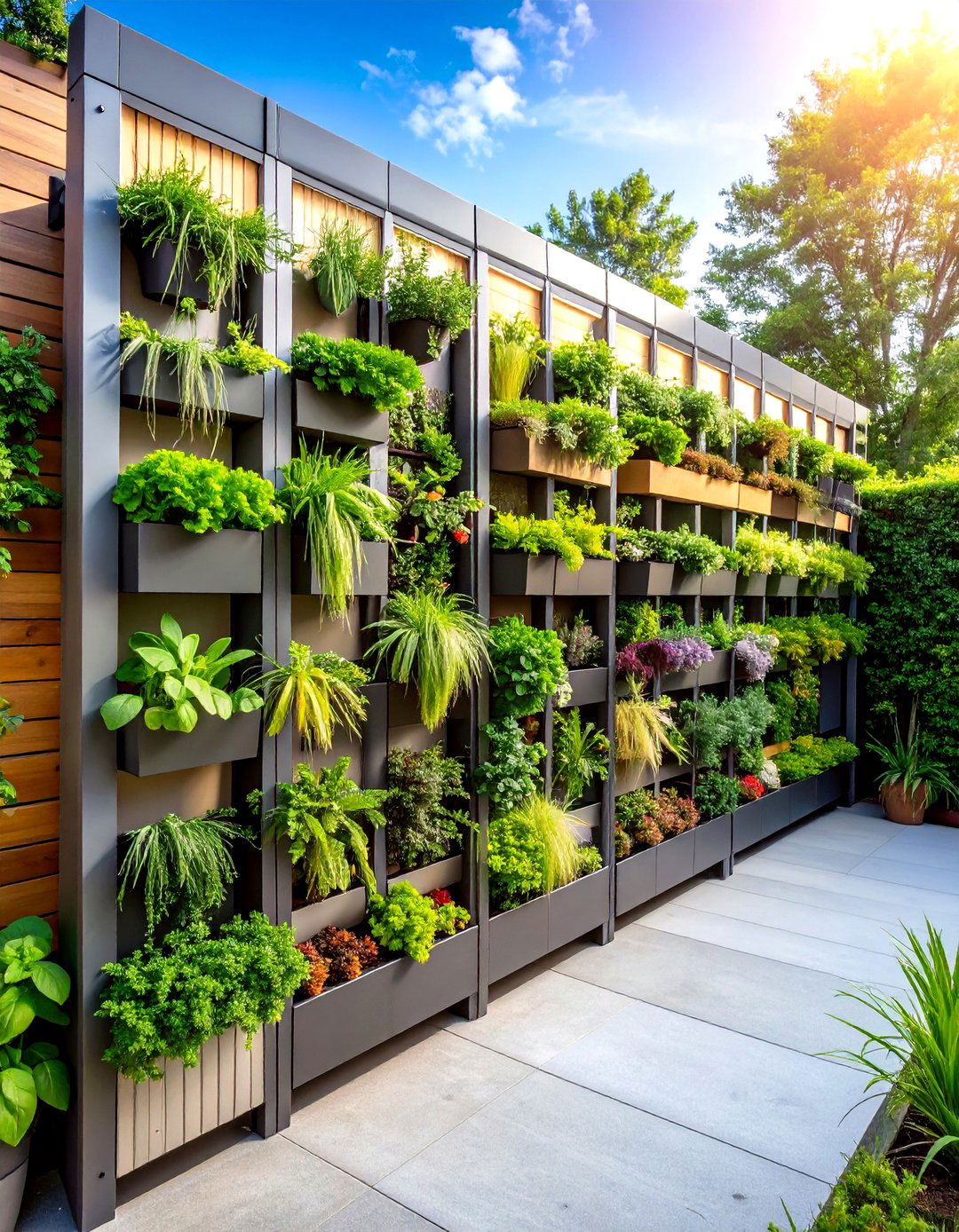
Modular living wall panels consist of prefabricated frames with integrated planting pockets or trays that clip together to form customizable green walls. Available in plastic, metal, or felt fabrics, these systems simplify installation and maintenance by including built-in irrigation channels and removable inserts. Homeowners and designers alike favor modular panels for their versatility—panels can be arranged in grids or staggered patterns to accommodate varied wall sizes. Suitable for herbs, ferns, and small ornamentals, living wall panels promote healthy root aeration and uniform hydration. Monthly maintenance involves trimming overgrowth and replenishing nutrient solution for hydroponic models.
3. Upcycled Pallet Gardens
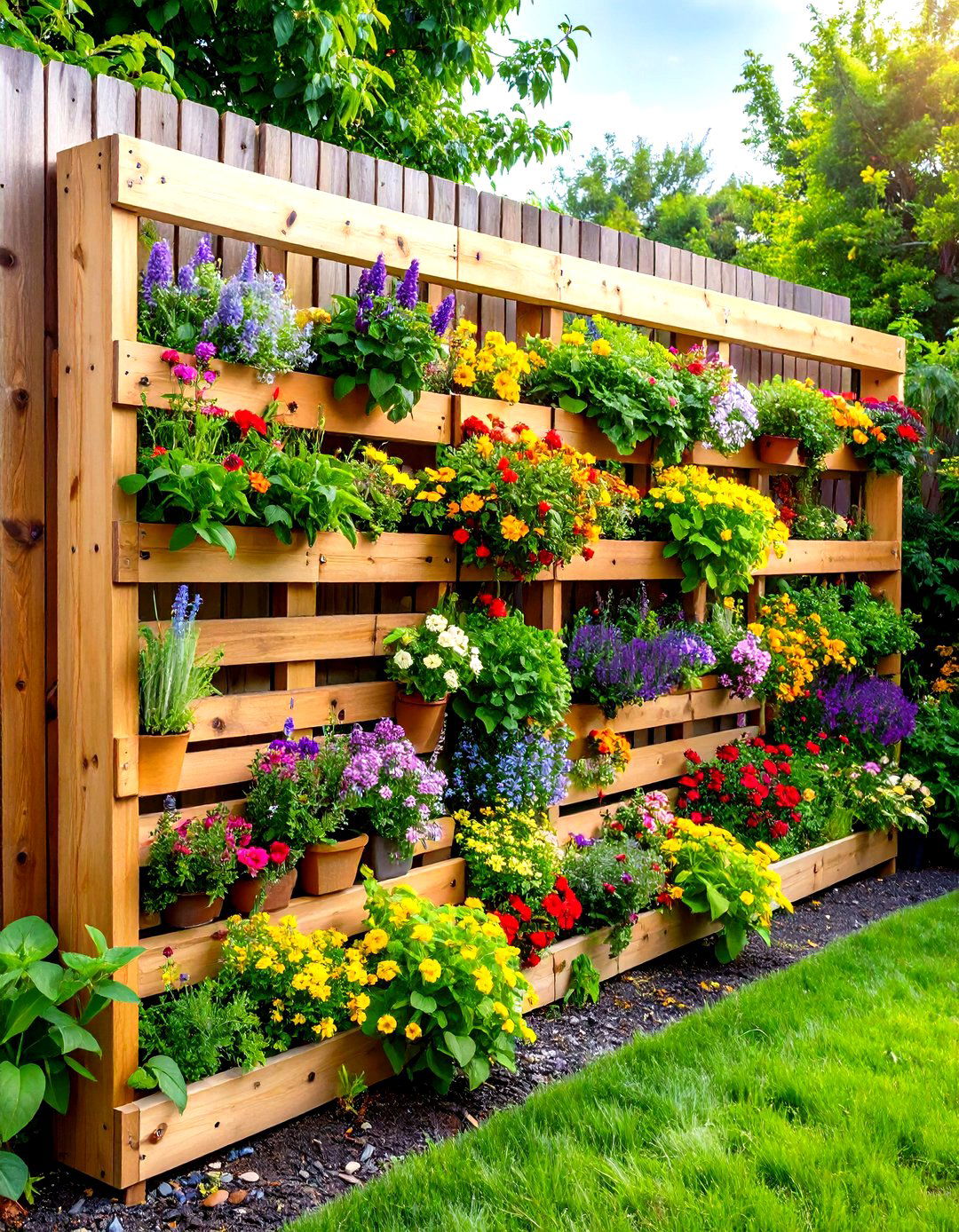
Repurposed wooden pallets offer an inexpensive skeleton for vertical gardens. Simply secure a pallet upright against a wall or fence, reinforce the back with landscaping fabric, and fill the slats with potting mix. Pallet gardens excel at growing strawberries, small lettuces, and shallow-rooted herbs. For longevity, choose heat-treated pallets free of harmful chemicals, and drill drainage holes at the bottom to prevent waterlogging. A coat of weather-resistant sealant can extend the pallet’s life outdoors. This DIY project is perfect for weekend crafters seeking a rustic aesthetic and functional planter without breaking the bank.
4. Hanging Pocket Planters

Hanging pocket planters consist of fabric or felt wall-mounted pockets, ideal for cascading foliage, herbs, or strawberries. The breathable material encourages root oxygenation, while individual pockets ensure plant separation for easier care. Install these planters on balcony railings or interior walls to bring greenery indoors. To optimize water use, choose self-watering versions equipped with reservoirs or pair with a drip irrigation system. Rotating pockets biannually helps plants receive uniform sunlight exposure. Beyond practicality, hanging pocket planters create living murals that can be reconfigured seasonally, showcasing blooms or edibles throughout the year.
5. DIY Ladder Shelf Garden
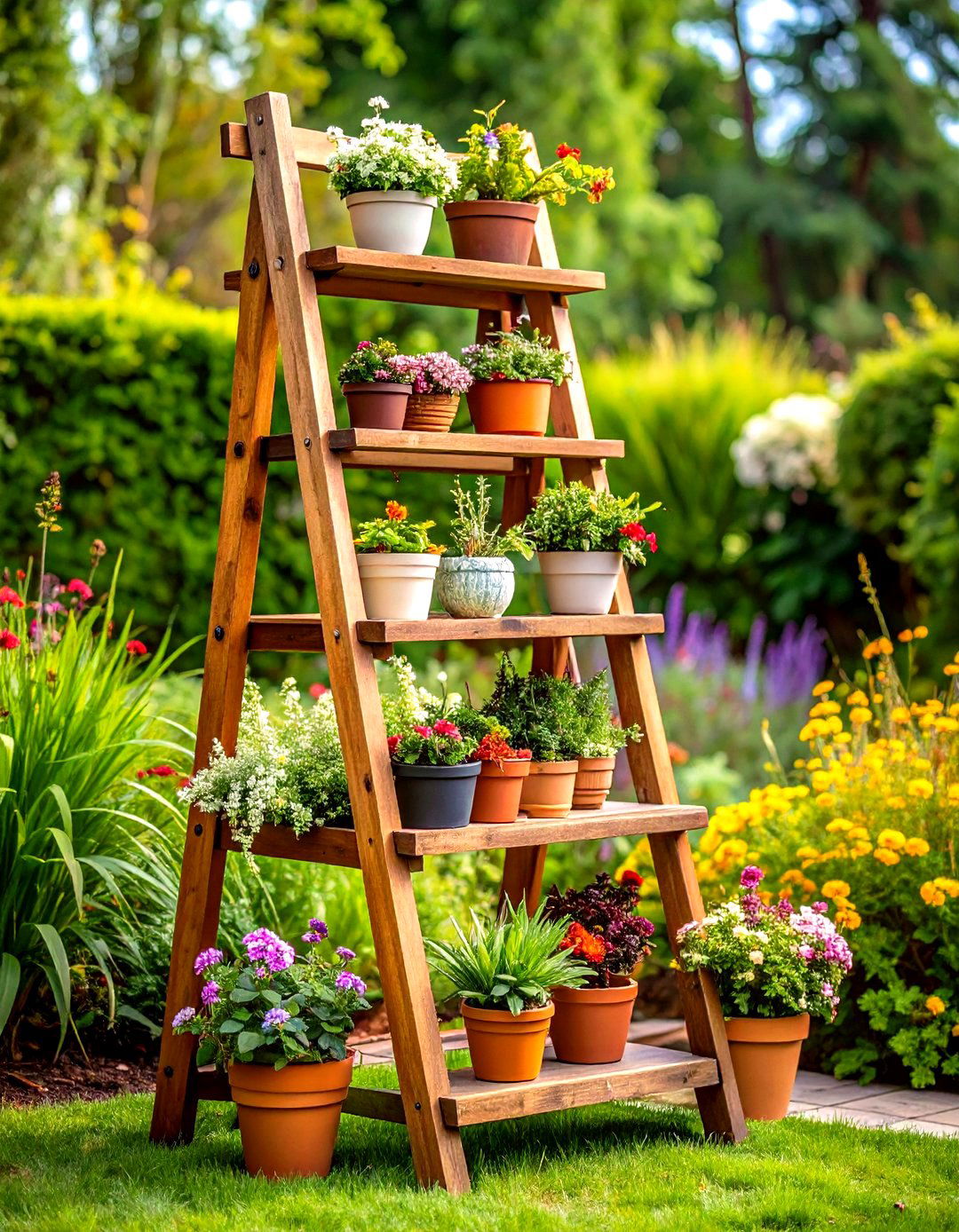
Transform an old wooden ladder into a tiered vertical garden stand by cleaning and sealing it, then placing it against a wall or fence. On each rung, rest potted plants—succulents, annuals, or small shrubs—creating a cascading green display. For added stability, secure the ladder top to the wall with brackets. This freestanding option offers mobility and no installation damage to surfaces. Ladders of varying heights and finishes enable designers to match any decor, from rustic farmhouse to modern minimalism. The simple structure encourages creativity in pot selection and layout, making it a fun weekend build.
6. Upcycled Shoe Organizer Planter

An inexpensive over-door shoe organizer can be repurposed into a vertical planter: line each pocket with landscape fabric, fill with soil, and plant herbs or flowers. This solution works indoors or on sheltered patios, offering vertical gardening without wall drilling. The clear pockets allow easy monitoring of soil moisture and root health. To prevent sagging, mount the organizer on a rigid backing such as plywood. Regular watering is crucial, as pockets dry out faster than ground beds. With this upcycling hack, even renters can enjoy a vertical garden that’s removable and damage-free.
7. Hanging Herb Rail
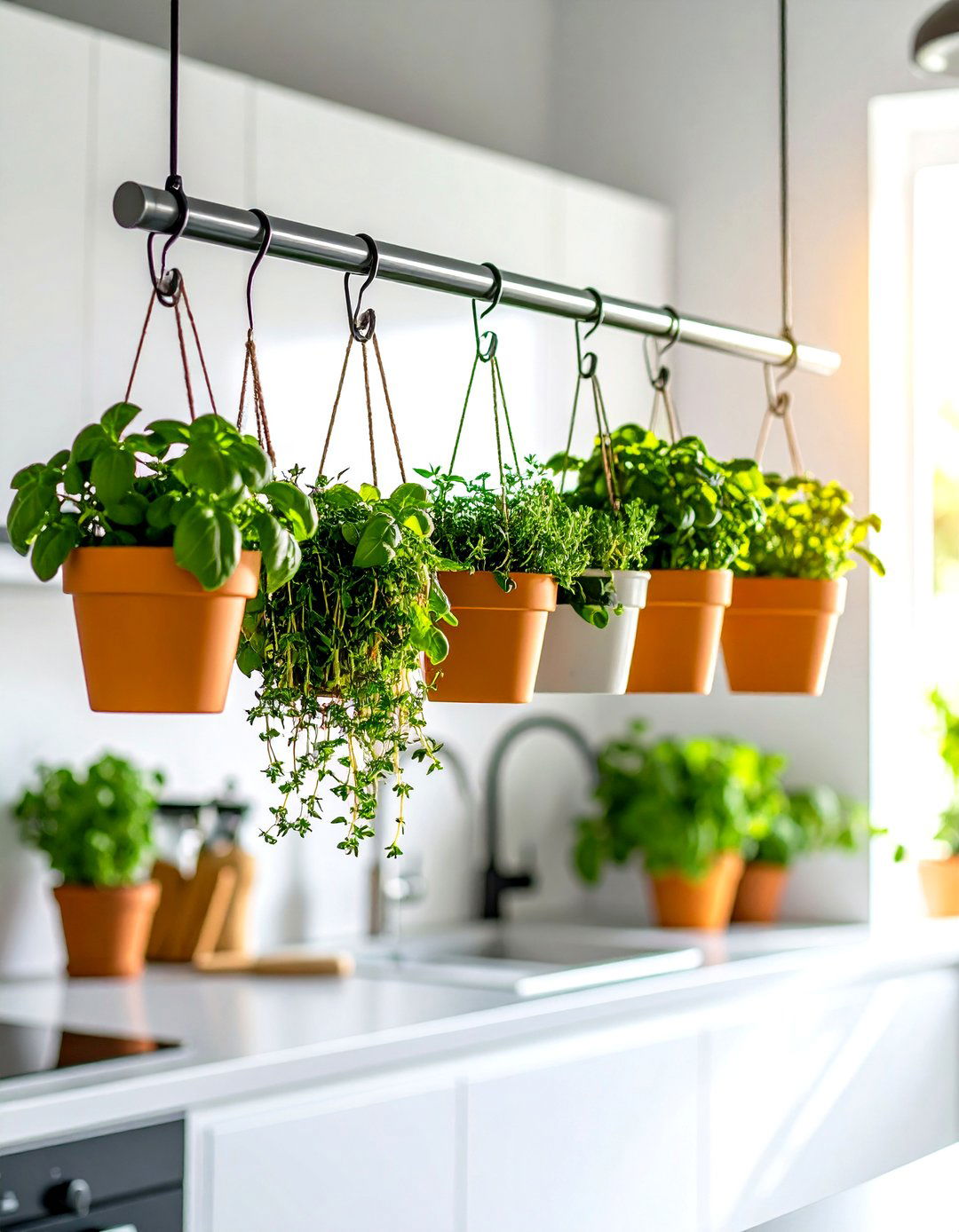
Install a metal rail with S-hooks beneath kitchen cabinets or on a balcony railing to hang small pots of culinary herbs. This minimalist recirculating garden keeps frequently used cooking greens at arm’s reach and adds year-round greenery indoors. Herb varieties like basil, thyme, and oregano thrive in 4-inch pots; ensure adequate light from a nearby window or supplemental grow lights. To save counter space, mount a small drip tray under the rail for intercepting excess water. This elevated kitchen garden blends functionality with decorative flair.
8. Succulent Wall Frames
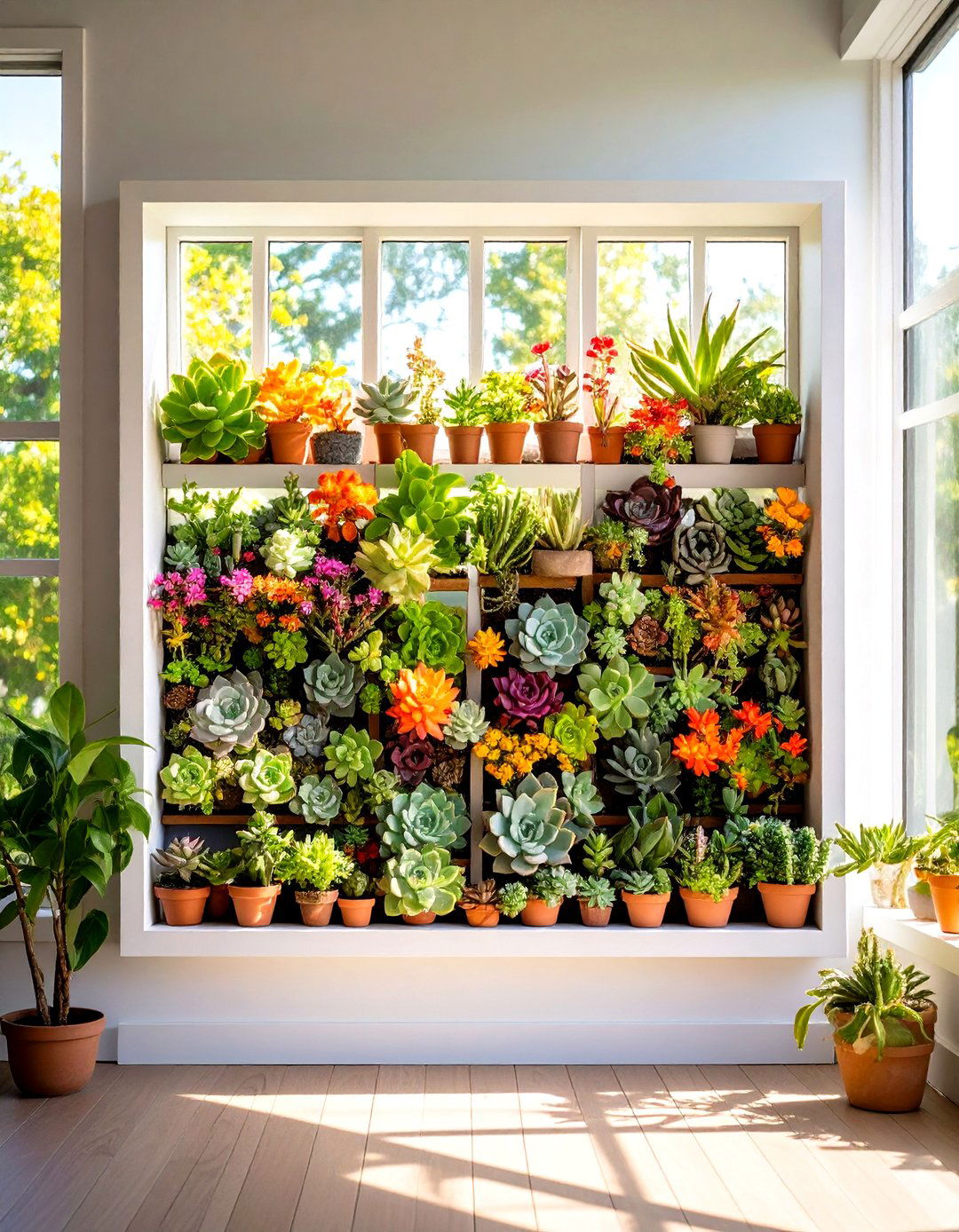
Create a living picture by planting succulents into shallow shadow boxes or frames lined with moss and landscape fabric. Drip irrigation tubing weaves behind the frame, delivering consistent moisture without oversaturation. Succulents—like echeveria, sedum, and haworthia—excel in vertical frames because of their low water needs. Hang these frames in bright, indirect light, rotating seasonally to prevent leggy growth. With designs ranging from geometric patterns to abstract art, succulent frames serve as year-round decor for patios, sunrooms, or office walls.
9. Vertical Hydroponic Towers
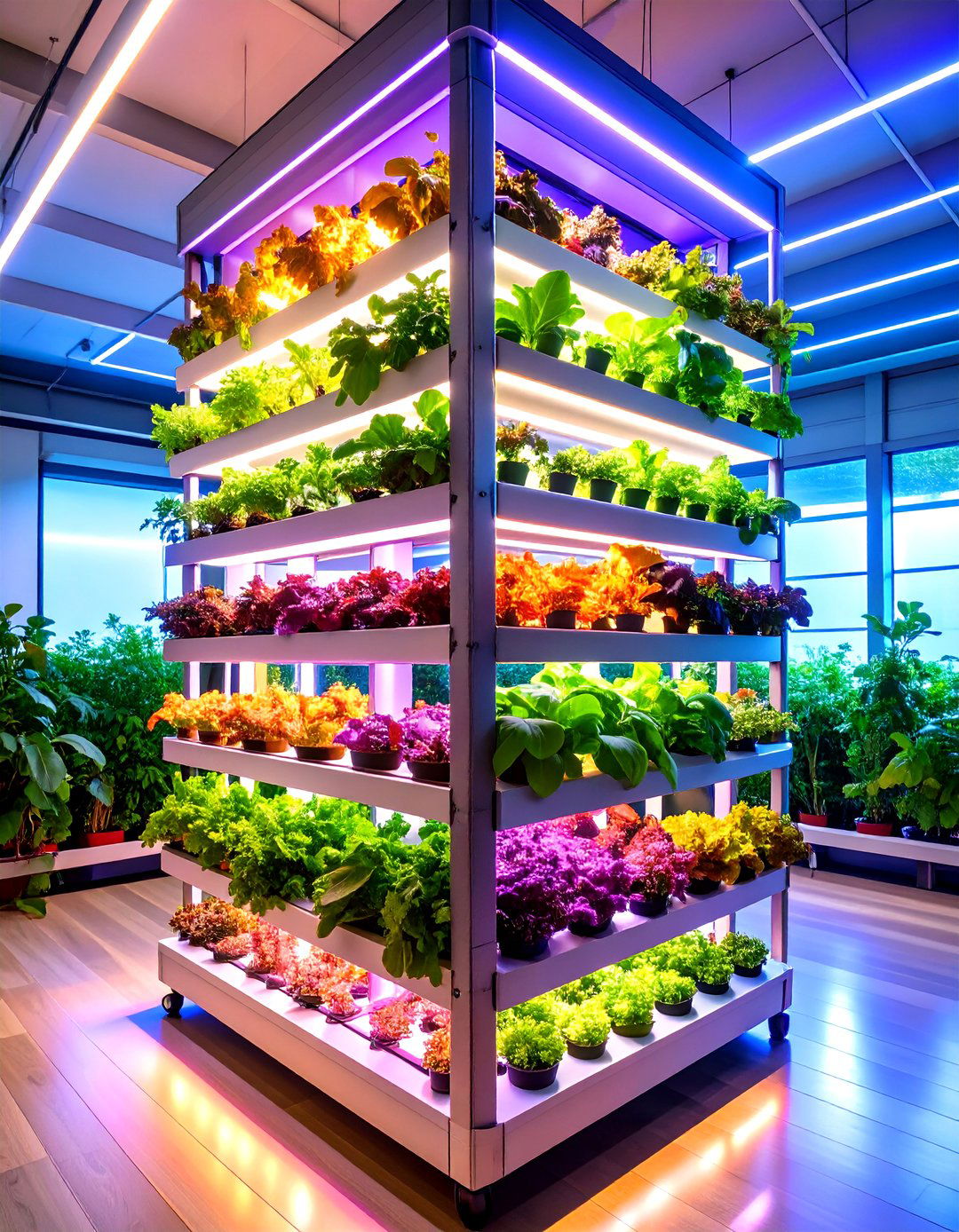
Vertical hydroponic towers use nutrient-rich water instead of soil, rotating it through stacked planters. Compact systems suit indoor grow tents or outdoor patios, enabling year-round cultivation of lettuces, kale, and herbs. Machines often include built-in pumps and reservoirs, simplifying setup. Because roots grow into the circulating solution, hydroponic towers maximize growth rates and yields in tight footprints. Regular monitoring of pH and nutrient concentration ensures plant health. Though initial investment is higher than traditional containers, hydroponic towers pay off with faster harvests and efficient water use.
10. Self-Watering Vertical Planter
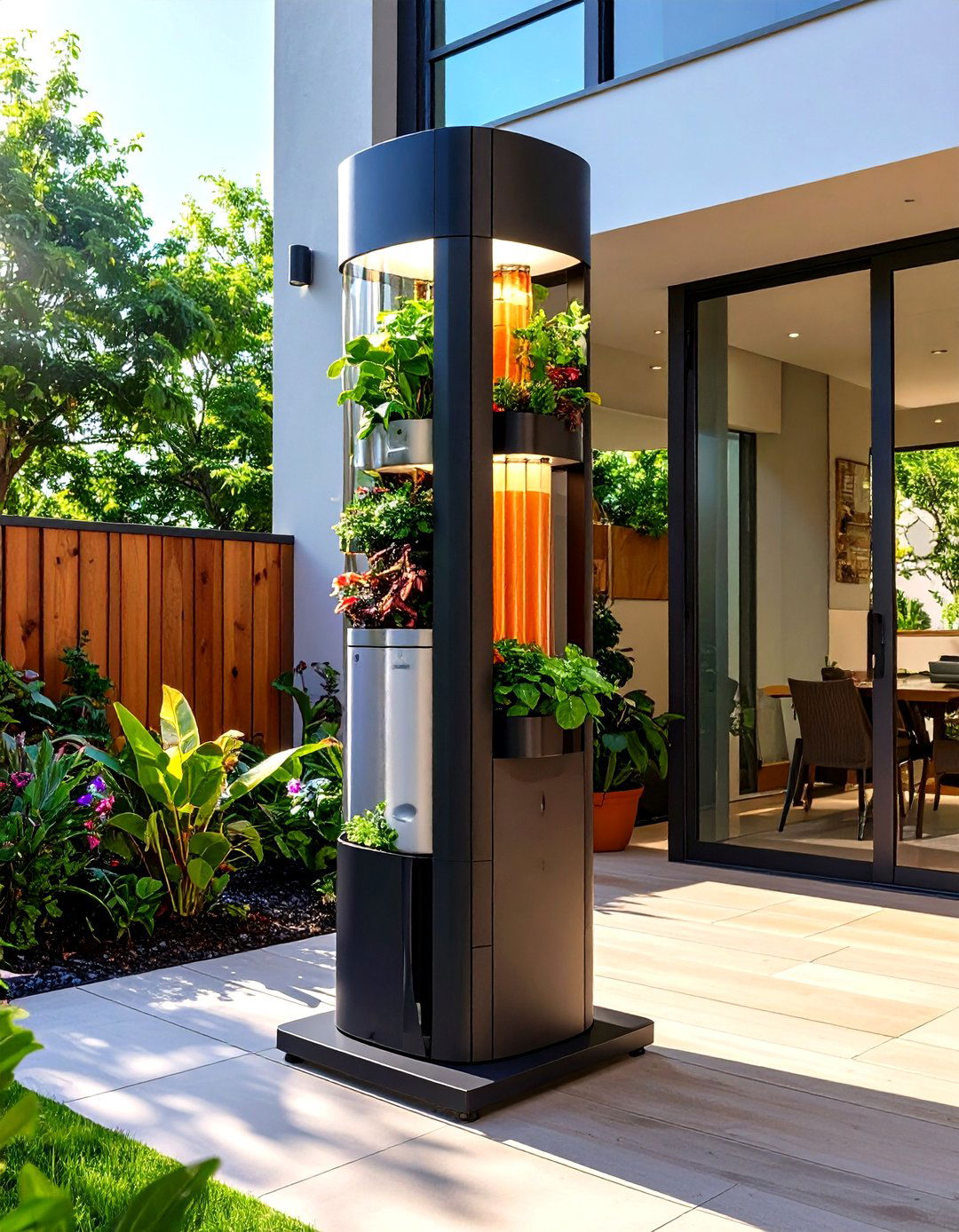
Self-watering vertical planters integrate a reservoir at the base, wicking moisture upward through capillary mats. These systems reduce watering frequency and help prevent under- or over-watering. Ideal for busy gardeners or vacations, self-watering models come in modular columns or stackable trays. Pair with drought-tolerant plants like succulents, herbs, or spider plants to maximize resilience. Inspect reservoirs monthly and refill as needed; cleaning the reservoir prevents algae buildup. With sleek composite or terracotta exteriors, self-watering vertical planters blend form and function on balconies and decks.
11. Colander Hanging Planter
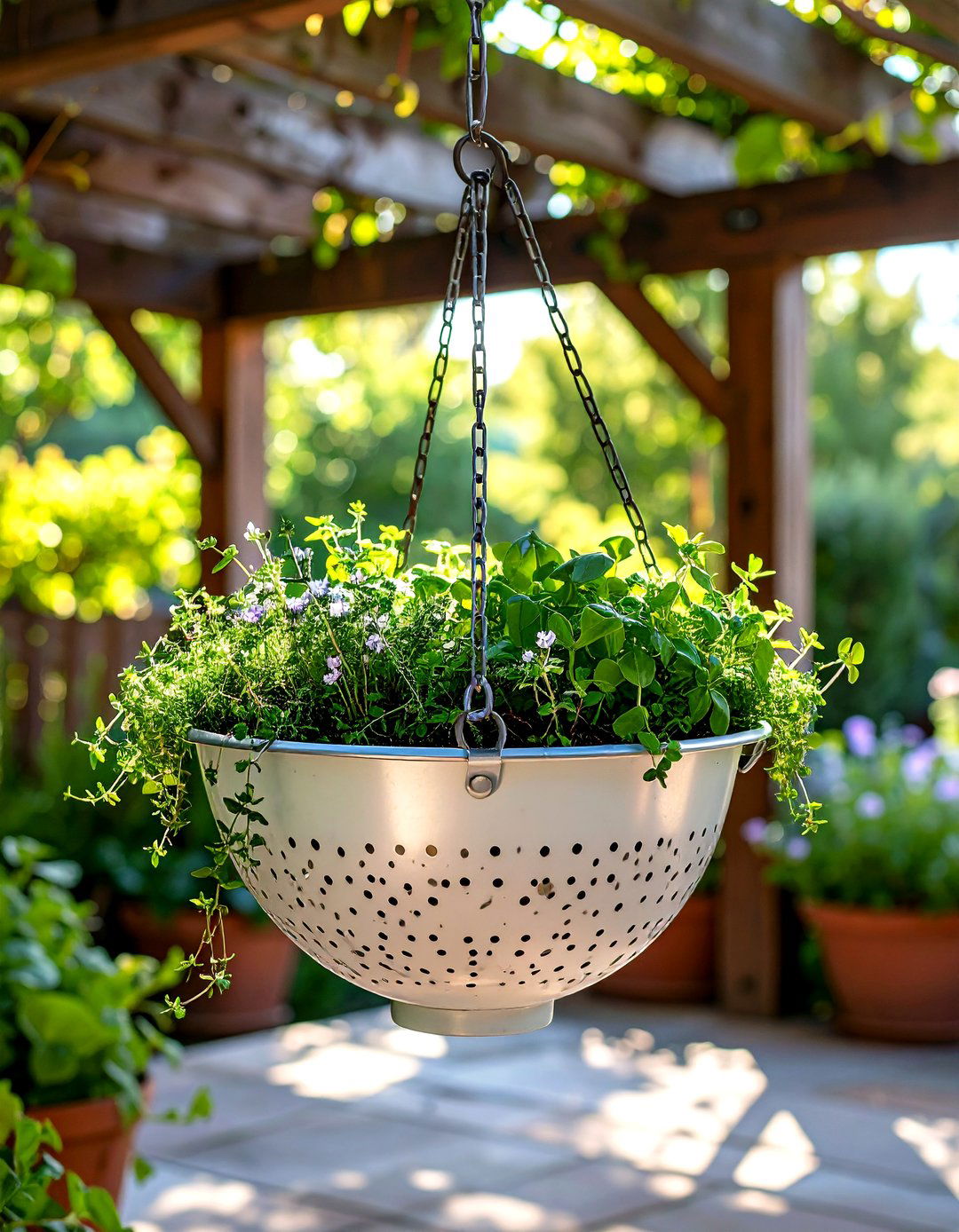
A simple metal colander repurposed as a hanging planter offers built-in drainage and charm. Line the colander with coconut coir or sphagnum moss, fill with potting mix, and suspend from hooks under eaves or pergolas. Colanders are perfect for growing trailing herbs—such as thyme, mint, or oregano—that cascade attractively. Position in partial shade to prevent scorching, and water from above to utilize the perforations. This budget-friendly hack is ideal for beginners and upcyclers alike.
12. PVC Pipe Planters
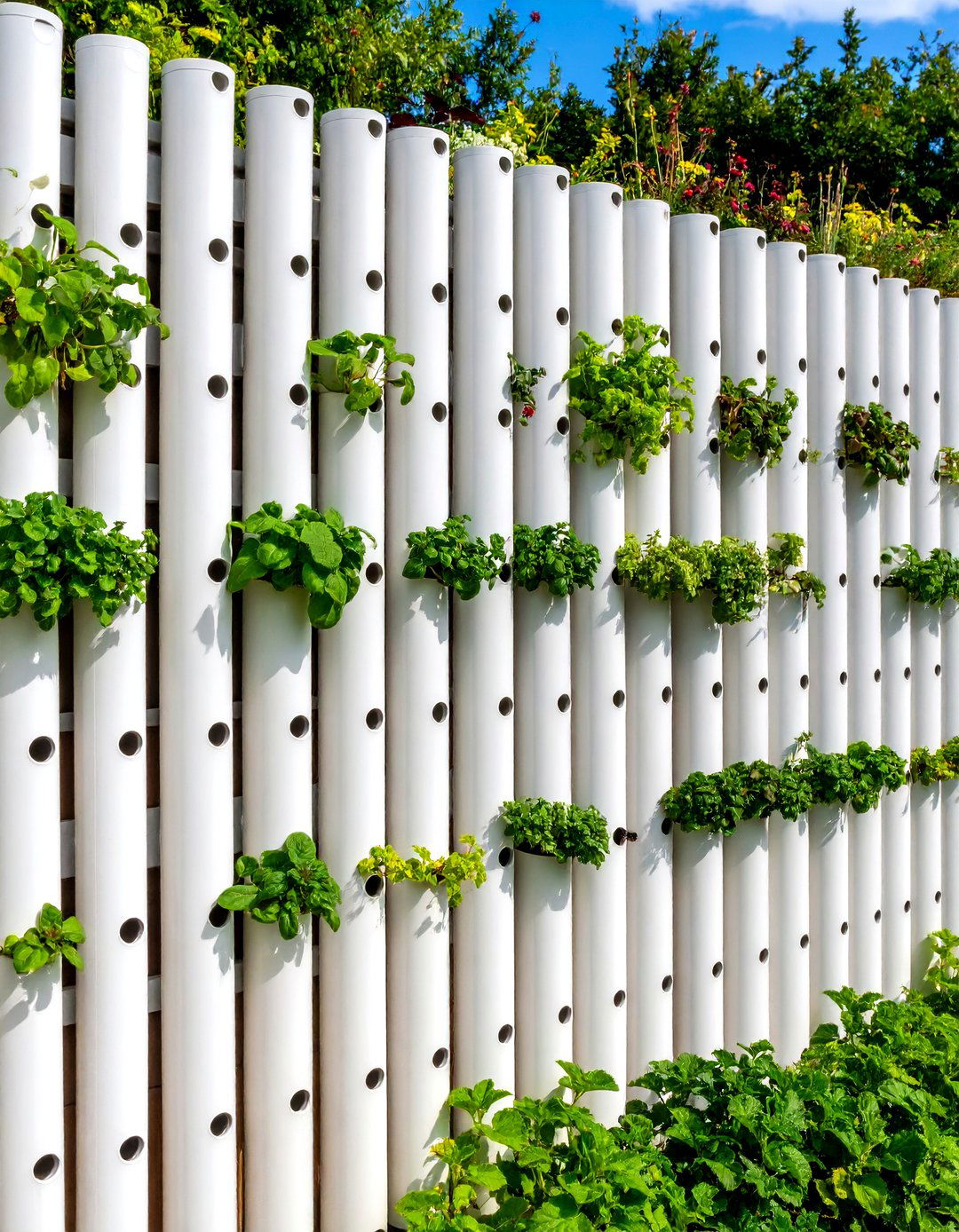
Drill holes into vertically mounted PVC pipes and insert individual pots or plant directly into the pipe sections. Secure the pipes against walls or fences using brackets. Light and weather-resistant, PVC planters suit strawberries, leafy greens, and small ornamentals. For irrigation, drill a series of micro-holes along the top and connect to a drip line. PVC’s modular nature allows creative configurations—vertical columns, staggered grids, or wave patterns—that add sculptural interest. Paint pipes in coordinating colors for an artistic touch.
13. Green Wall Art Installations
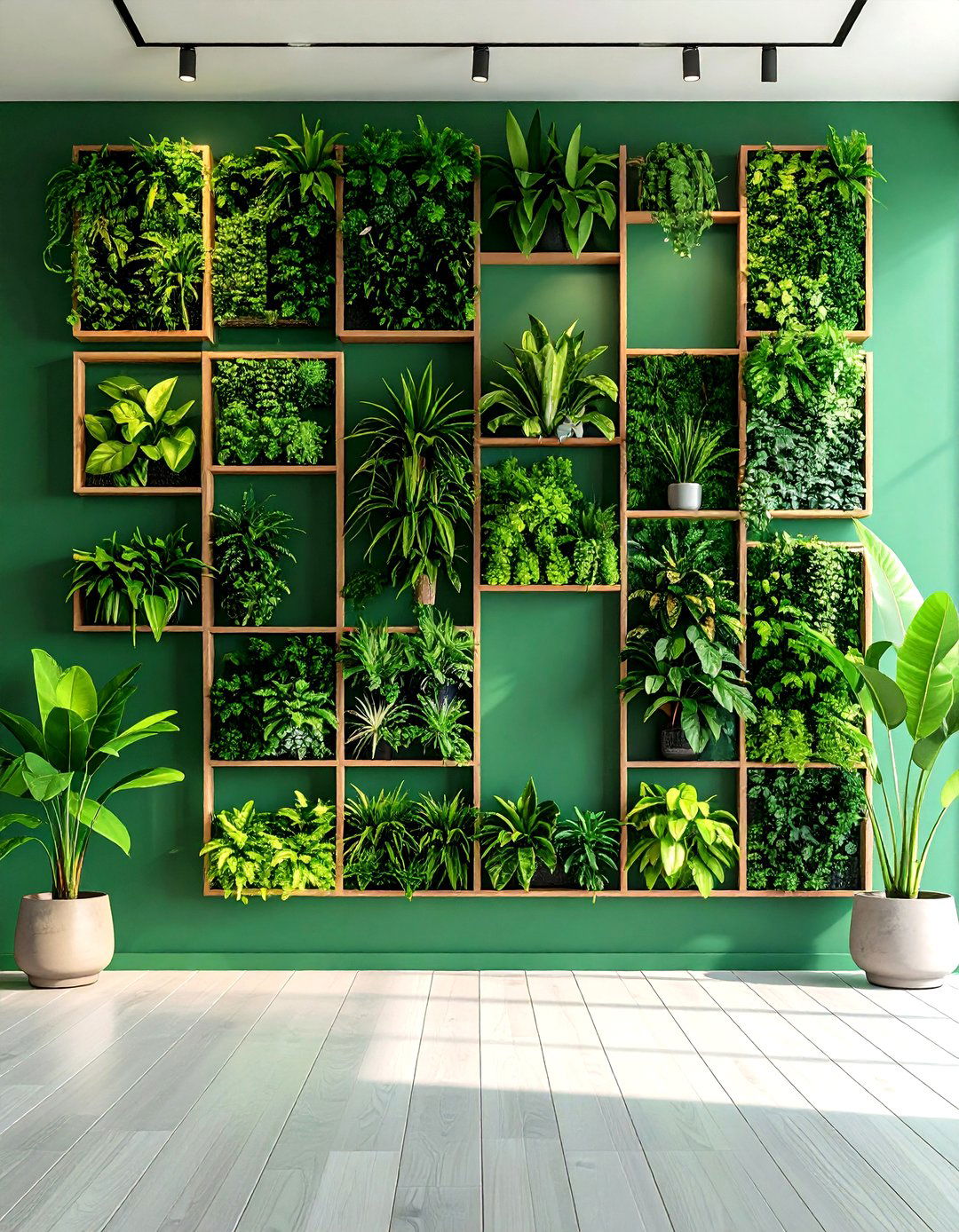
Green wall art combines living plants with decorative frames, mirrors, or mosaics. Use a backing board of waterproof plywood, attach plastic pockets or felt panels, then embed plants into the design. Such installations elevate vertical gardening to interior design, featuring shapes like hearts, letters, or abstract forms. Professionals often integrate automatic misting for maintenance, while DIYers can hand-water or drip-irrigate. Green wall art brings biophilic benefits indoors—enhancing aesthetic appeal, improving air quality, and reducing stress.
14. Vertical Bottle Gardens

Recycle plastic bottles by cutting them in half, filling with soil, and mounting them horizontally on a frame. Ideal for microgreens, small herbs, or succulents, bottle gardens demonstrate sustainability and creativity. Label rows for planting dates or seed varieties. This lightweight system works on balconies or in classrooms to teach gardening basics. For a tidy appearance, uniformly cut bottles and paint the exteriors before planting. Replace bottles annually to prevent material degradation.
15. Living Fence Panels
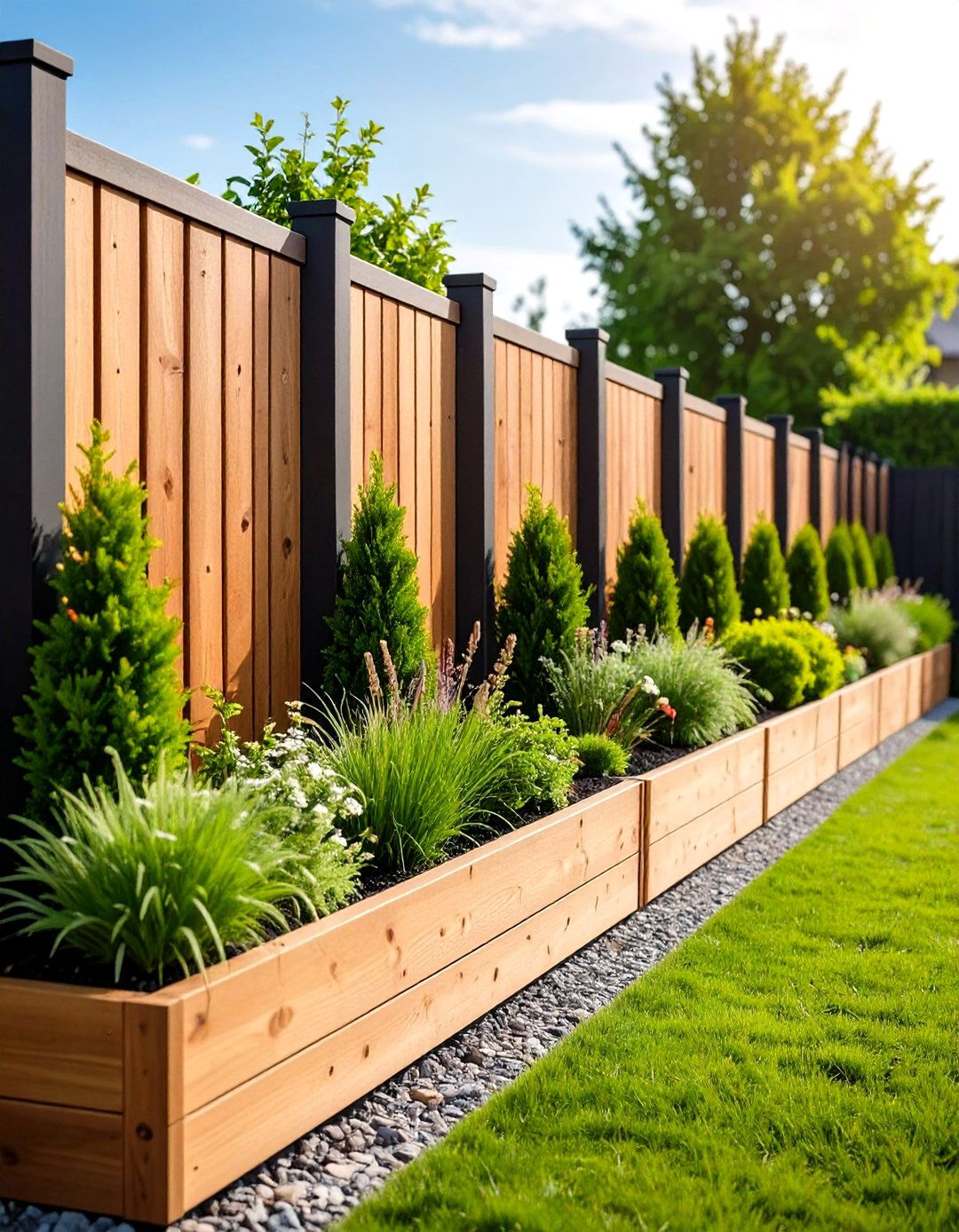
Combine fencing and planting by integrating planter troughs or pocket systems directly into wood or metal panels. As plants grow, they fill the gaps to create a chevron of greenery that doubles as a privacy screen. Suitable species include boxwood, pittosporum, and small grasses. Living fence panels can be pre-grown off-site and installed as full green screens for instant impact. Maintenance involves seasonal pruning to maintain density and shape.
16. Balcony Railing Boxes
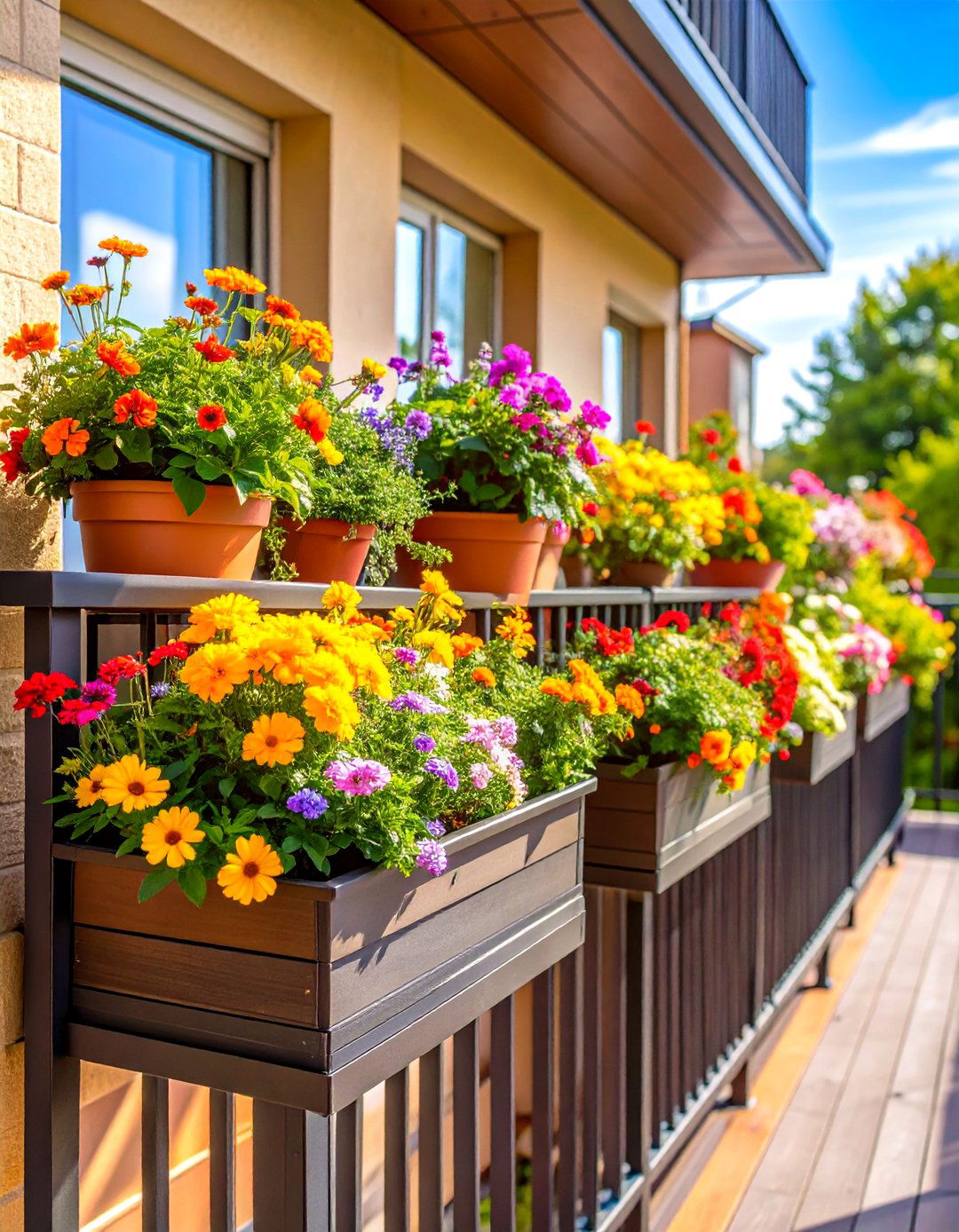
Specially designed boxes hook over balcony railings, turning narrow edges into vertical gardens for annuals, strawberries, or cascading flowers. Many models include adjustable brackets to fit different railing widths. Ideal for apartment dwellers, railing boxes offer accessible gardening—no ladder required—and add color to urban landscapes. Be mindful of weight limits and use lightweight soil mixes to reduce load. Combined with tiered hanging pots, railing boxes can create multi-layered vertical displays.
17. Spiral Herb Towers
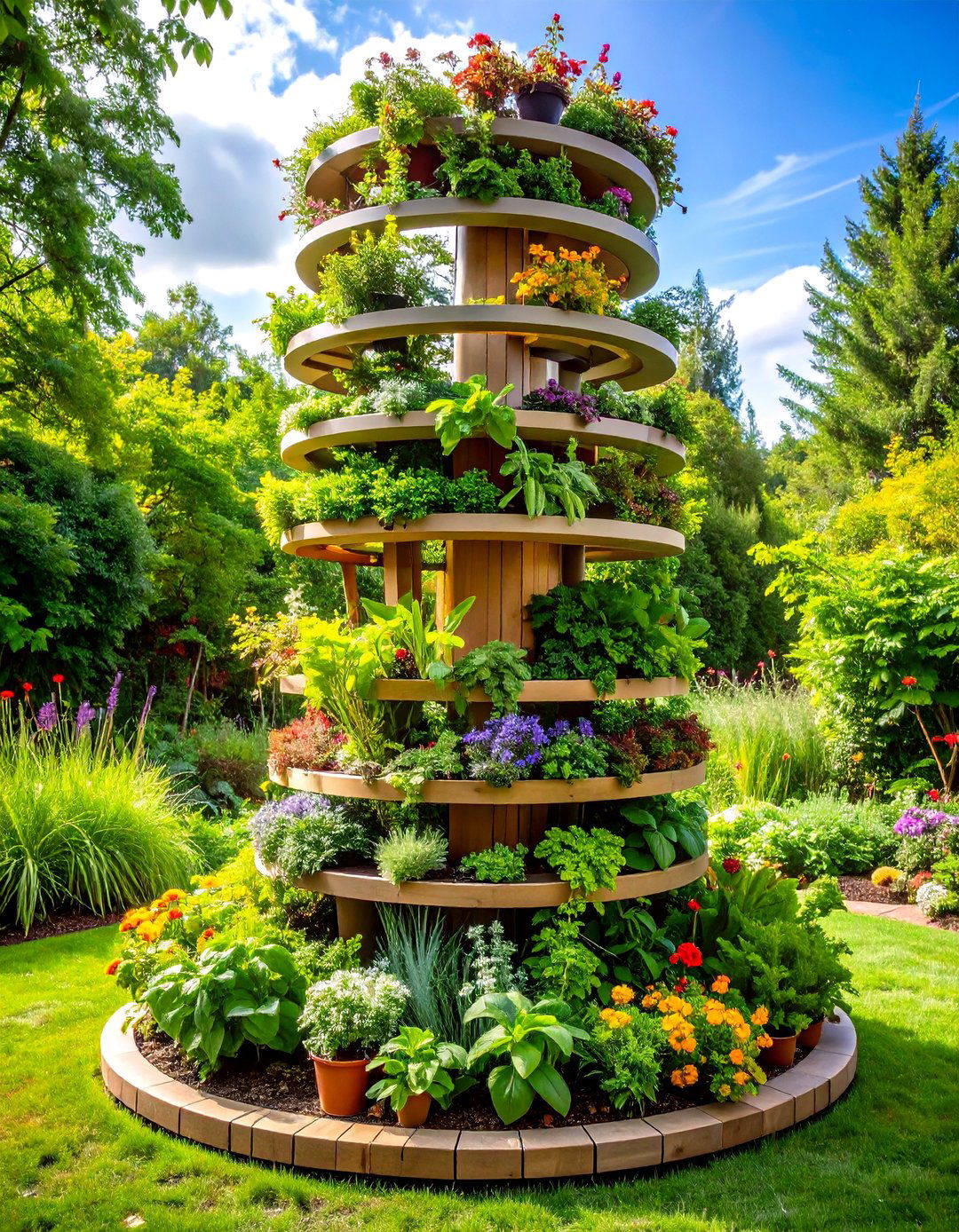
Commercial spiral herb towers stack concentric rings of planting pockets in a spiral pattern around a central post. These towers maximize space by allowing easy access to every plant. Typical towers support dozens of herbs in a one-square-foot footprint. Crafted from food-safe plastics or metals, they often include built-in irrigation drippers. Spiral towers produce high yields and become focal points in edible landscapes. Rotate the structure periodically to ensure even sunlight distribution.
18. Vertical Greenhouses
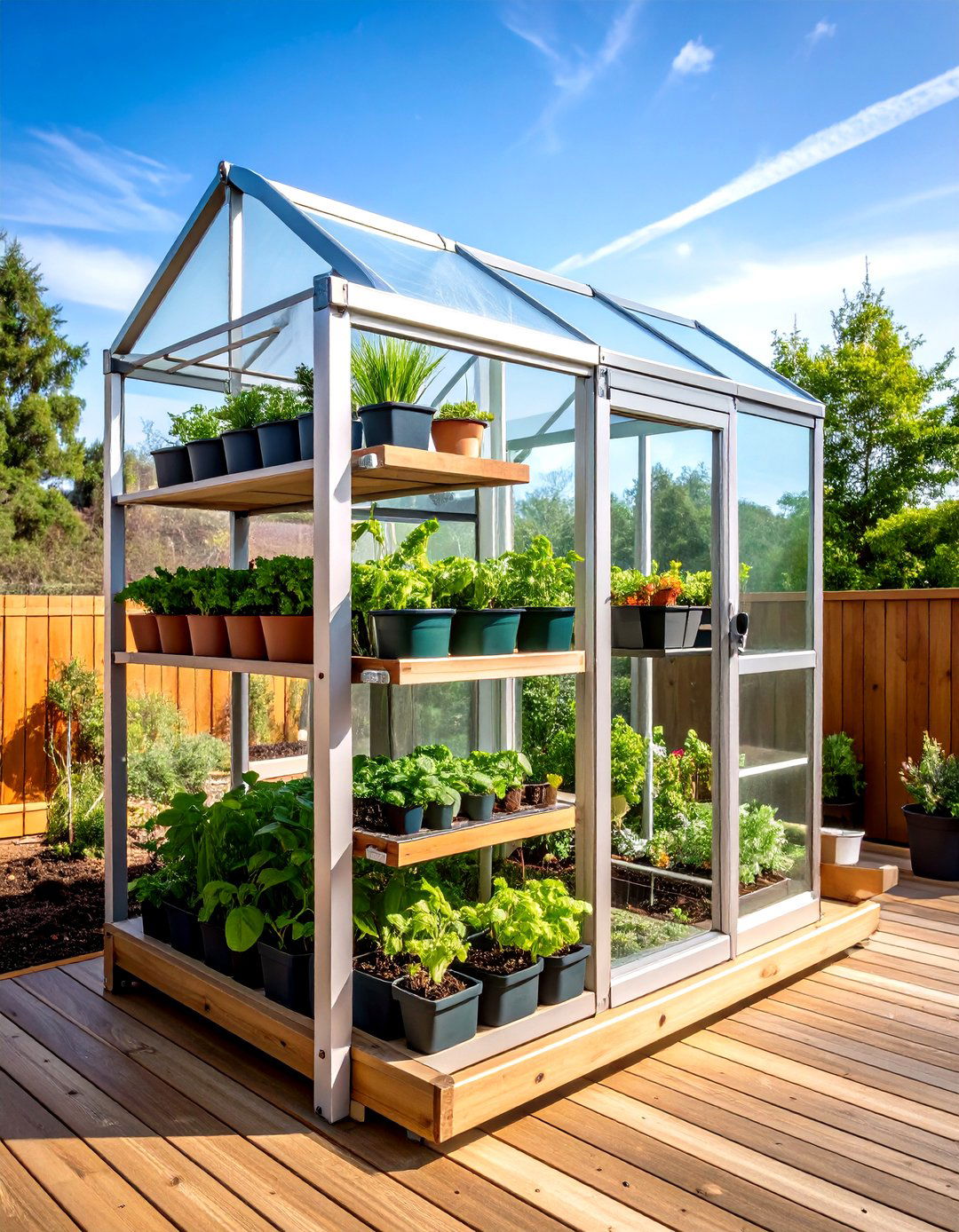
Small vertical greenhouses use multiple shelving tiers within a compact frame covered by plastic sheeting. These “mini” greenhouses allow year-round seed starting and frost protection for vertical plantings. Adjustable vents and UV-resistant covers regulate temperature and light. Ideal for raising seedlings before transplanting into larger vertical systems, vertical greenhouses protect delicate species like orchids or tropical ferns. Their narrow footprint makes them suitable for decks, patios, or sunrooms, extending the growing season in cooler climates.
19. Vertical Moss Walls
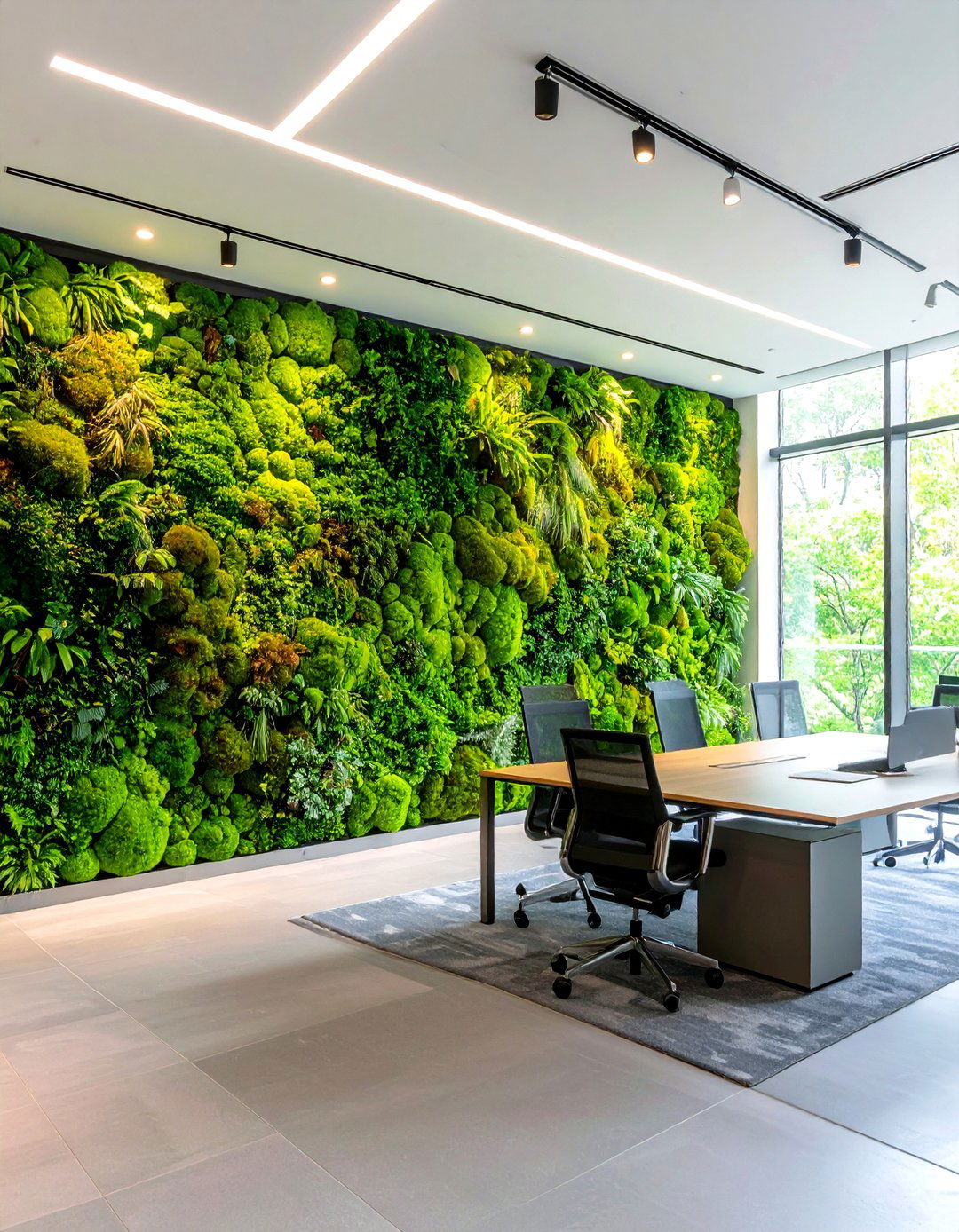
Moss walls use preserved or living moss attached to panels for a low-maintenance, indoor green wall that doesn’t require irrigation. Suitable for offices or homes without sufficient light, moss walls offer texture and sound-absorbing benefits. Living moss walls include a thin layer of substrate and misting systems, while preserved moss requires no watering. Both options require indirect light and periodic dusting. Moss walls create a calming, biophilic backdrop ideal for lobbies and living rooms.
20. Hanging Drum Planters
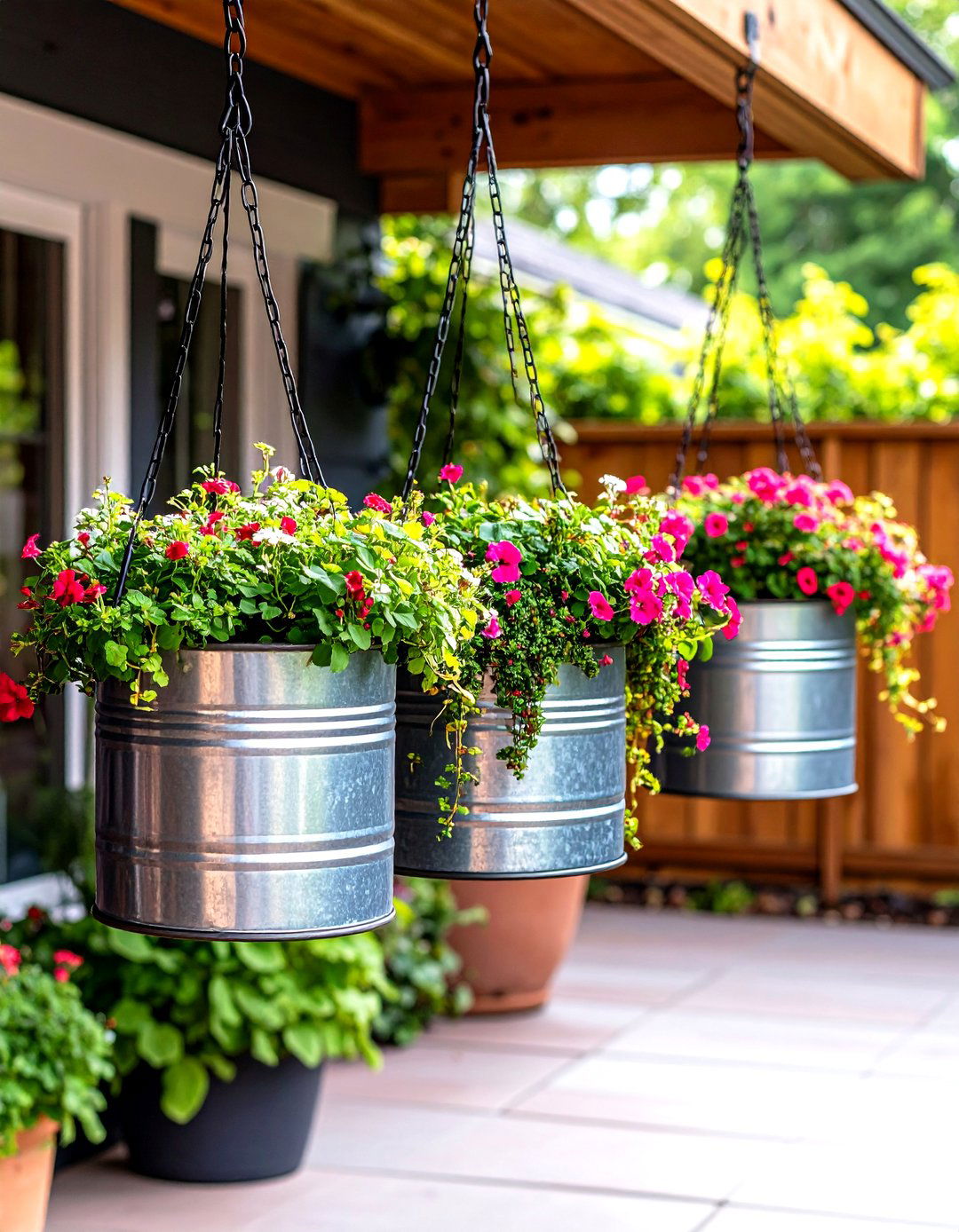
Repurpose metal drums or large pods by cutting openings and suspending them from strong cables. Fill with trailing plants like fuchsia, ivy, or petunias for a dramatic hanging basket effect at eye level. Drum planters can be staggered in height to form a cascading vertical garden. Ensure proper drainage by drilling holes and using liners. This striking installation works well in entryways or over patios for instant elevation of outdoor décor.
Conclusion:
Vertical gardening offers endless creative possibilities, turning walls, fences, and even railings into productive, decorative spaces. From simple DIY hacks like shoe organizers and colanders to sophisticated hydroponic towers and living art installations, each idea maximizes space while adding greenery and functionality. Whether you’re an urban dweller with a small balcony or a homeowner seeking a unique garden feature, these 20 vertical garden ideas provide inspiration for year-round enjoyment. Embrace vertical planting to boost yields, beautify your surroundings, and reap the environmental benefits of living walls. Happy gardening!



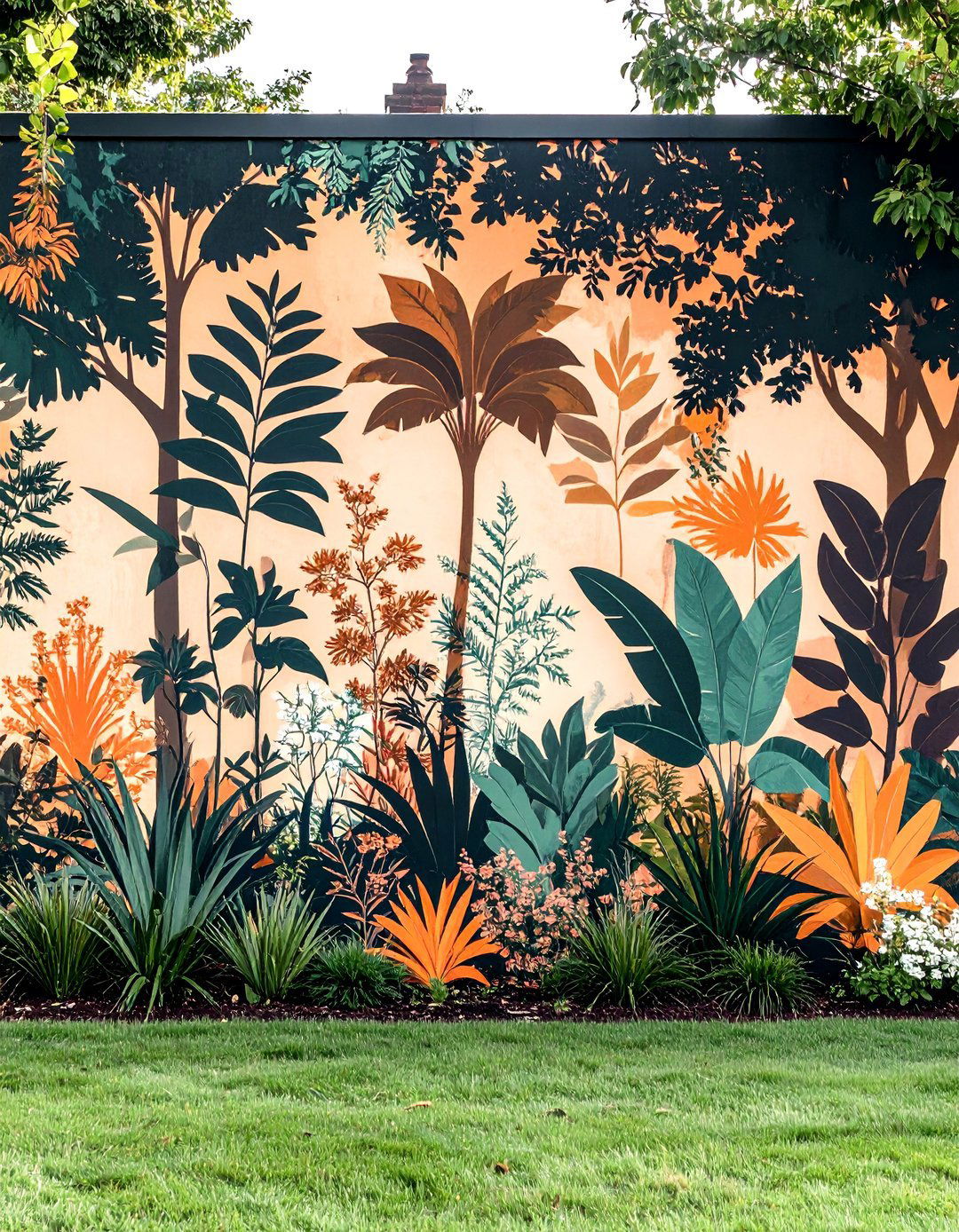
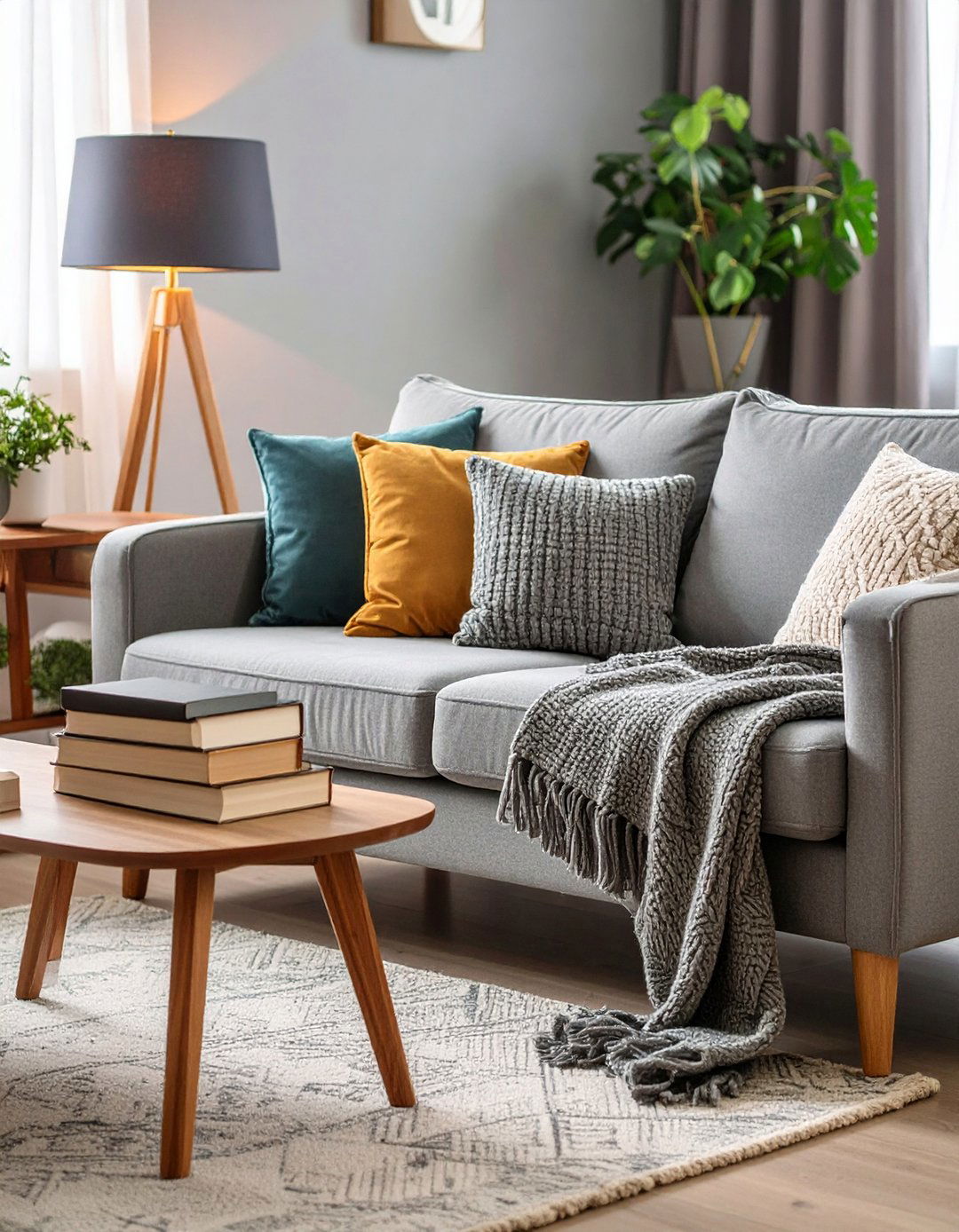
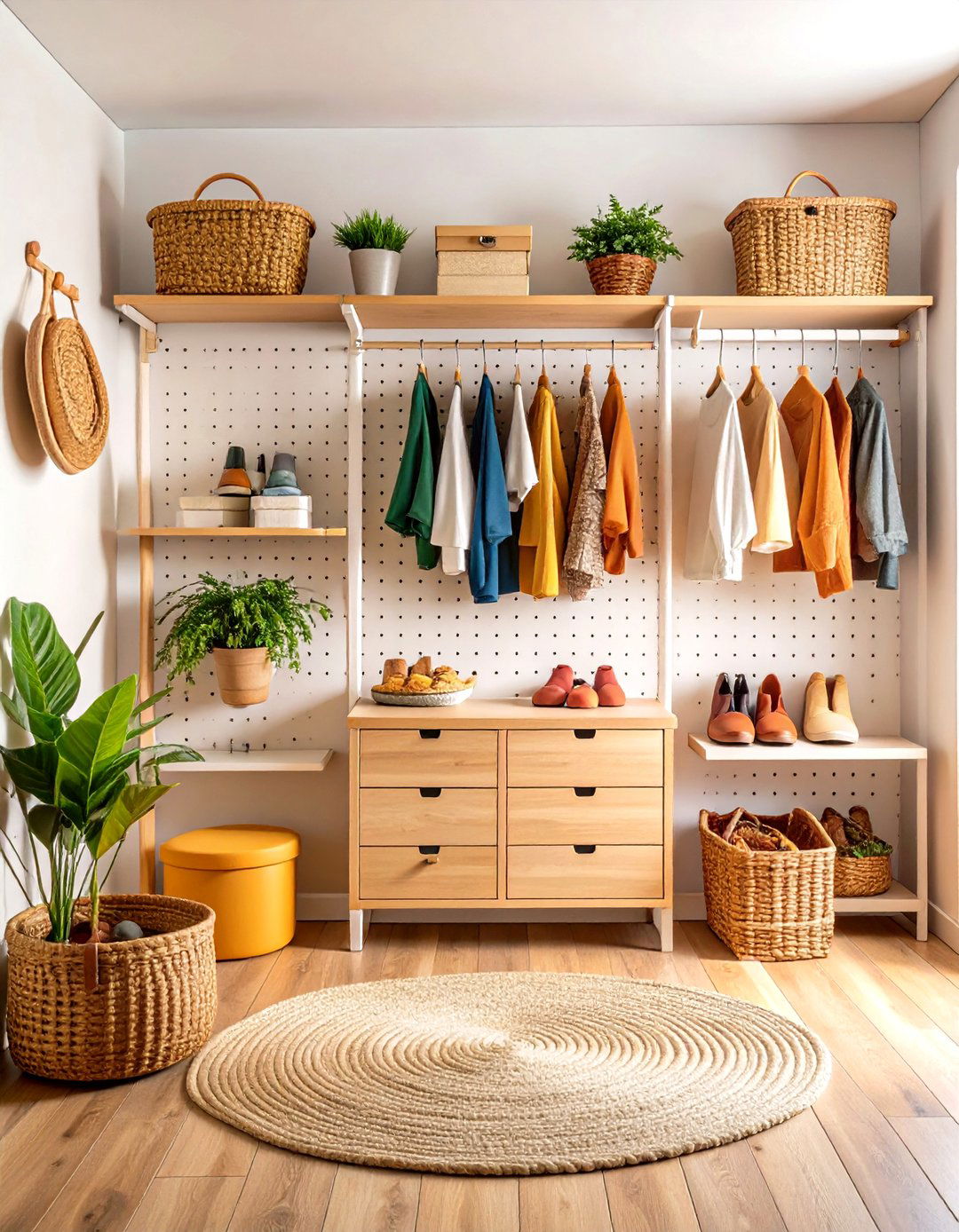
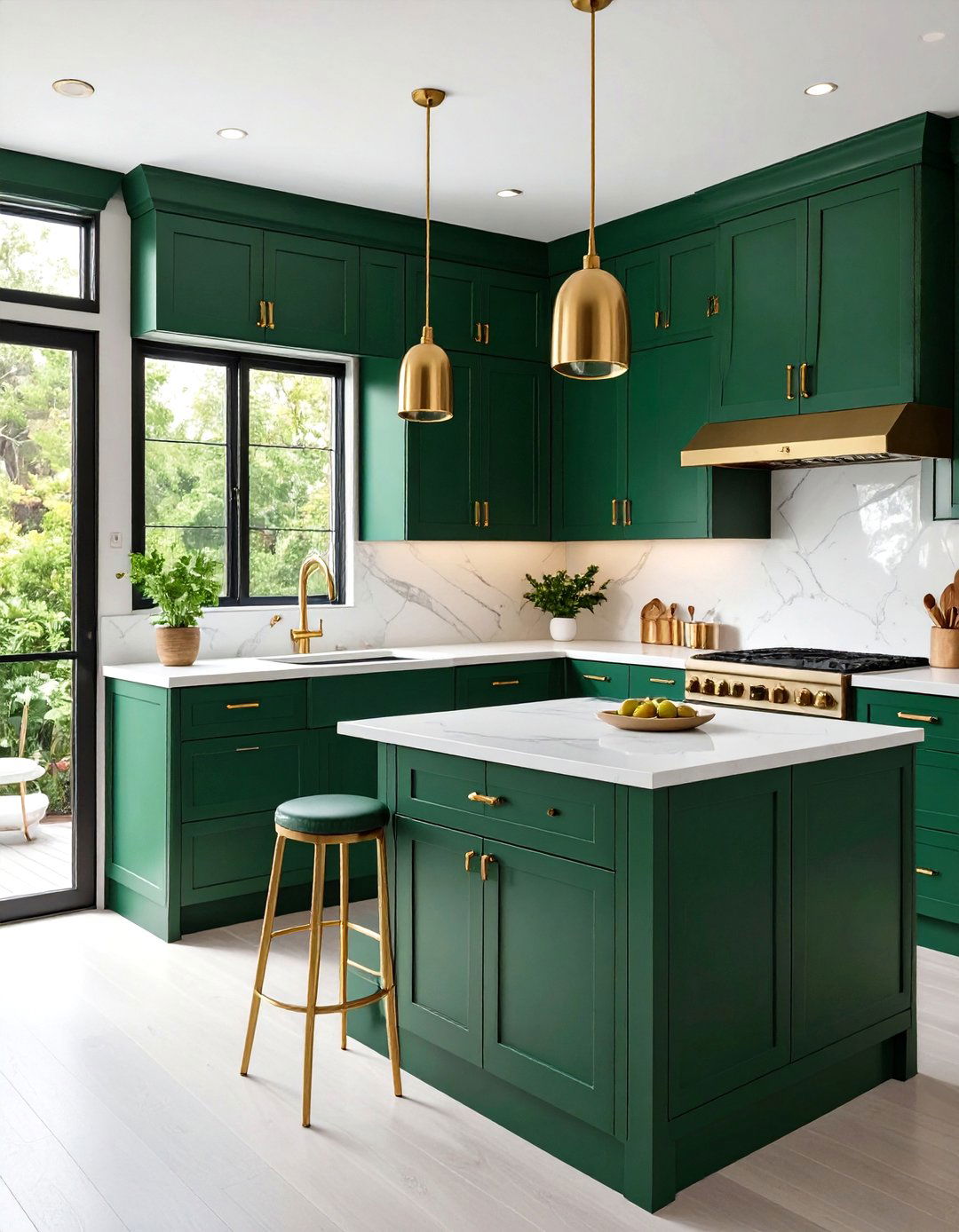
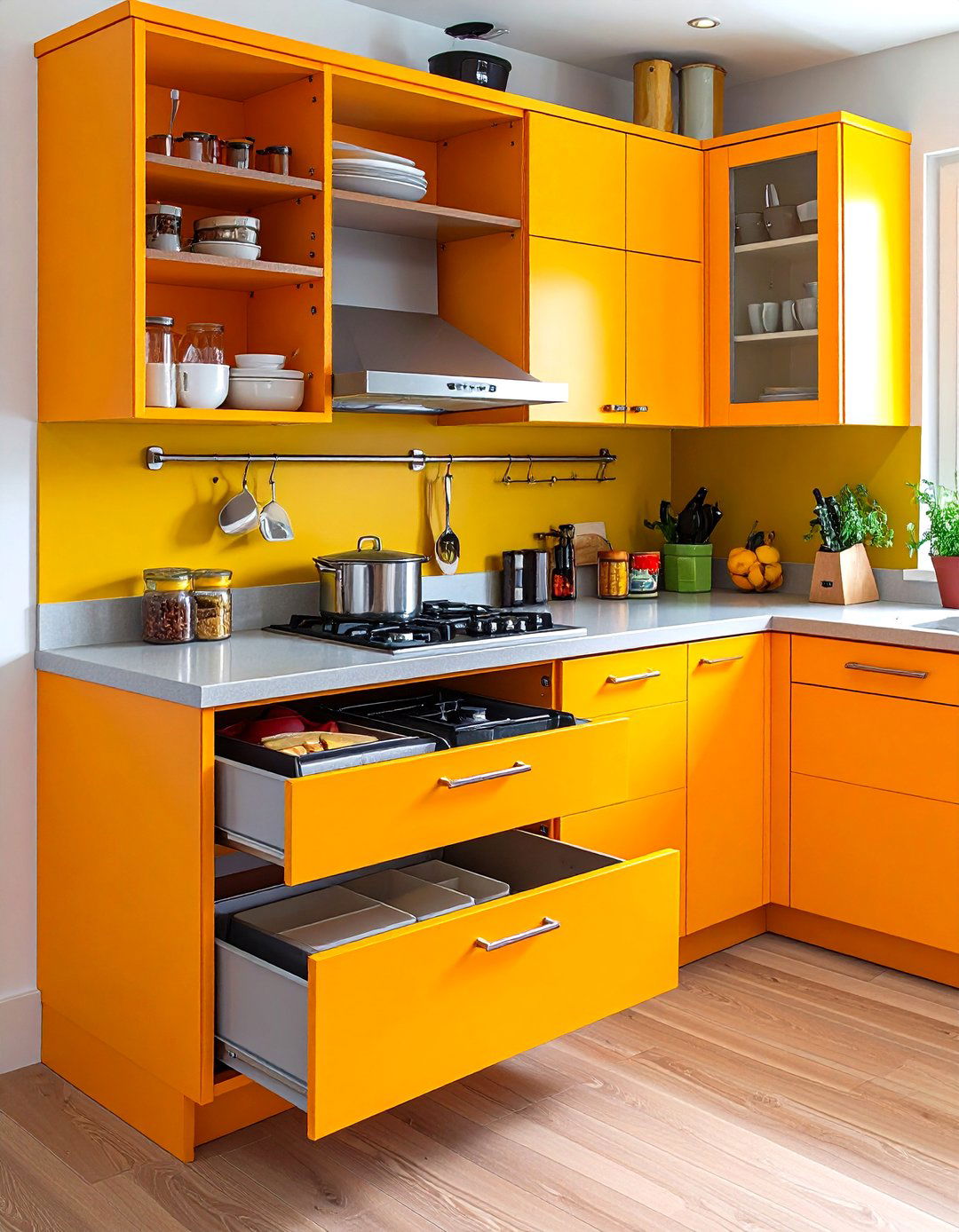
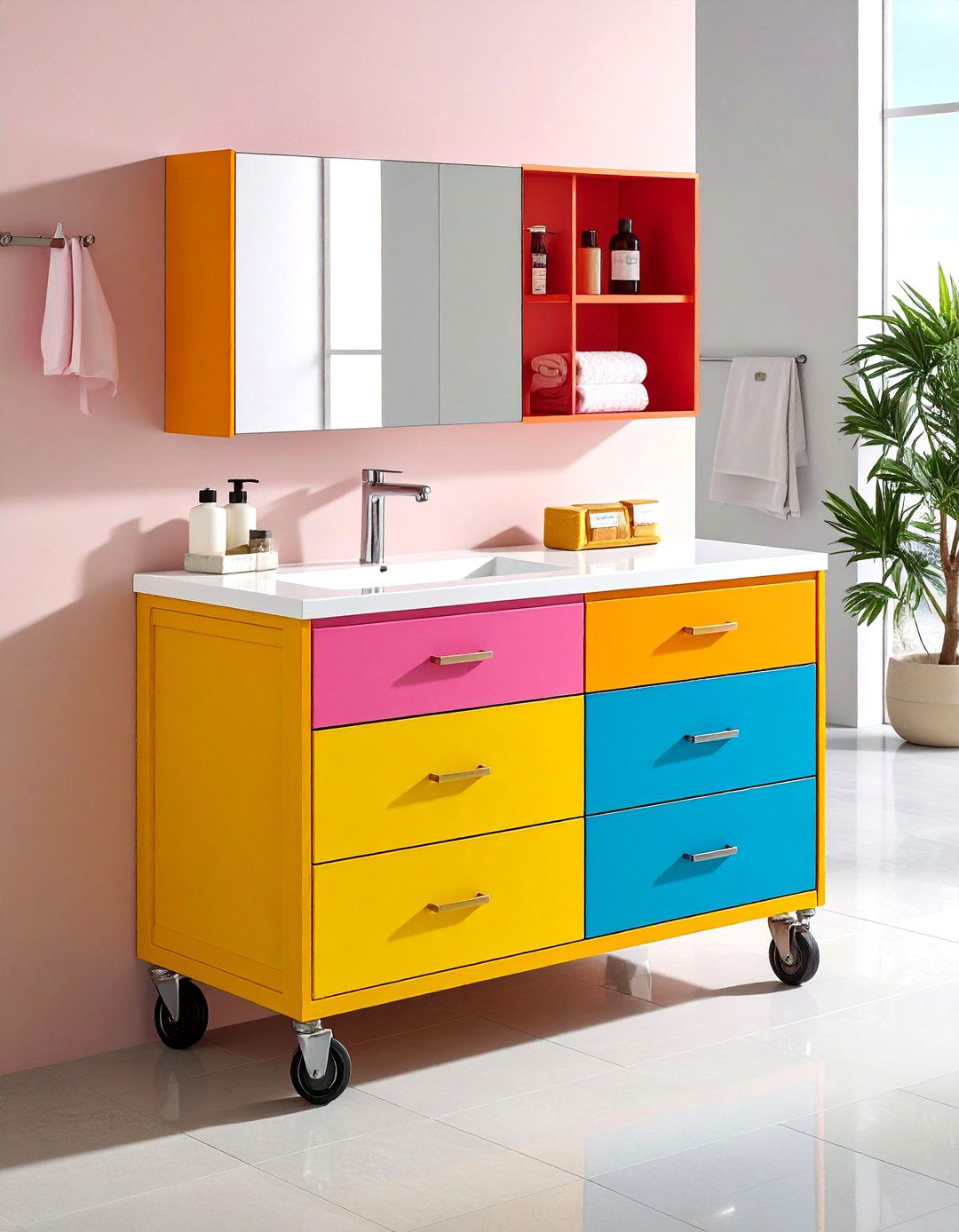
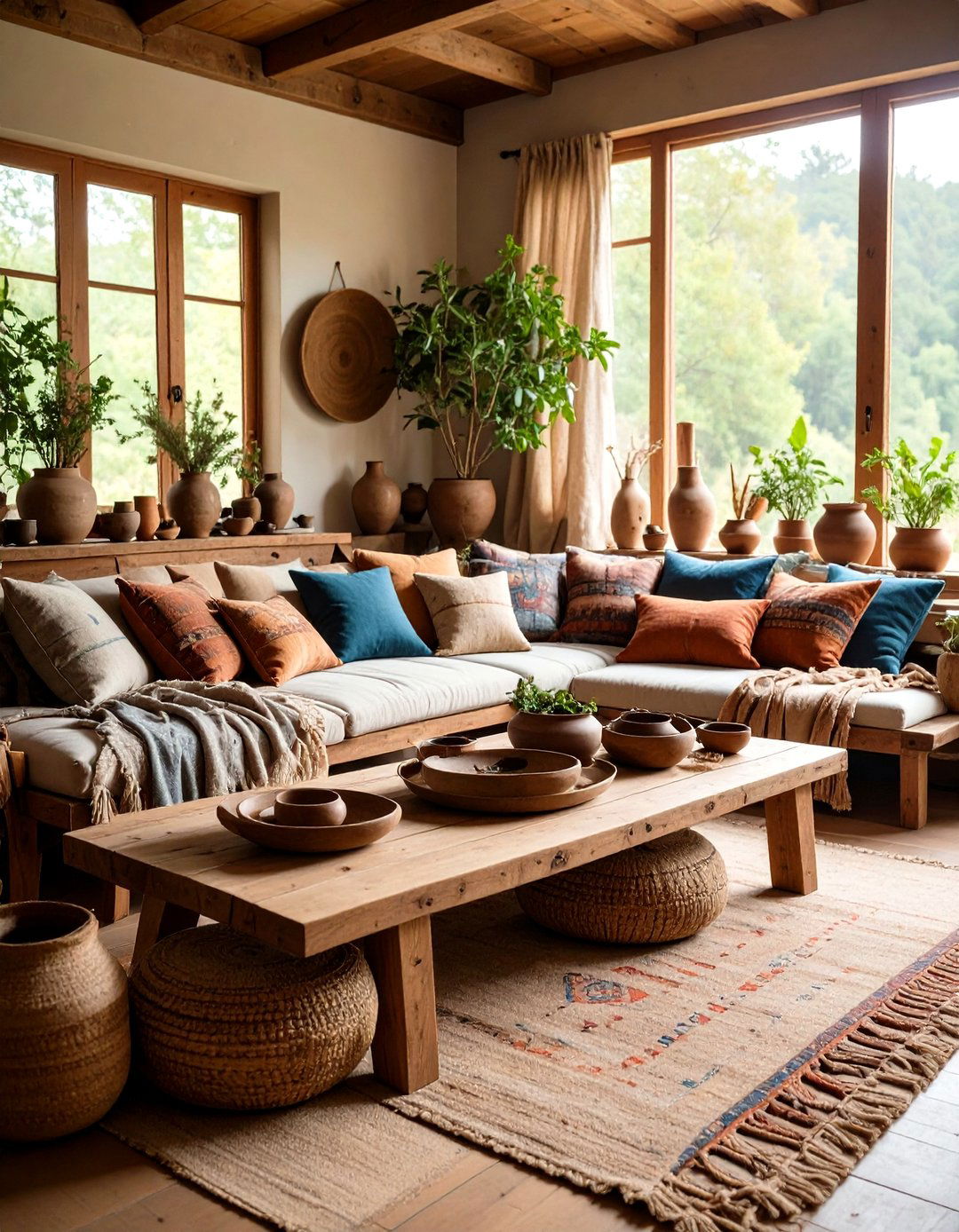
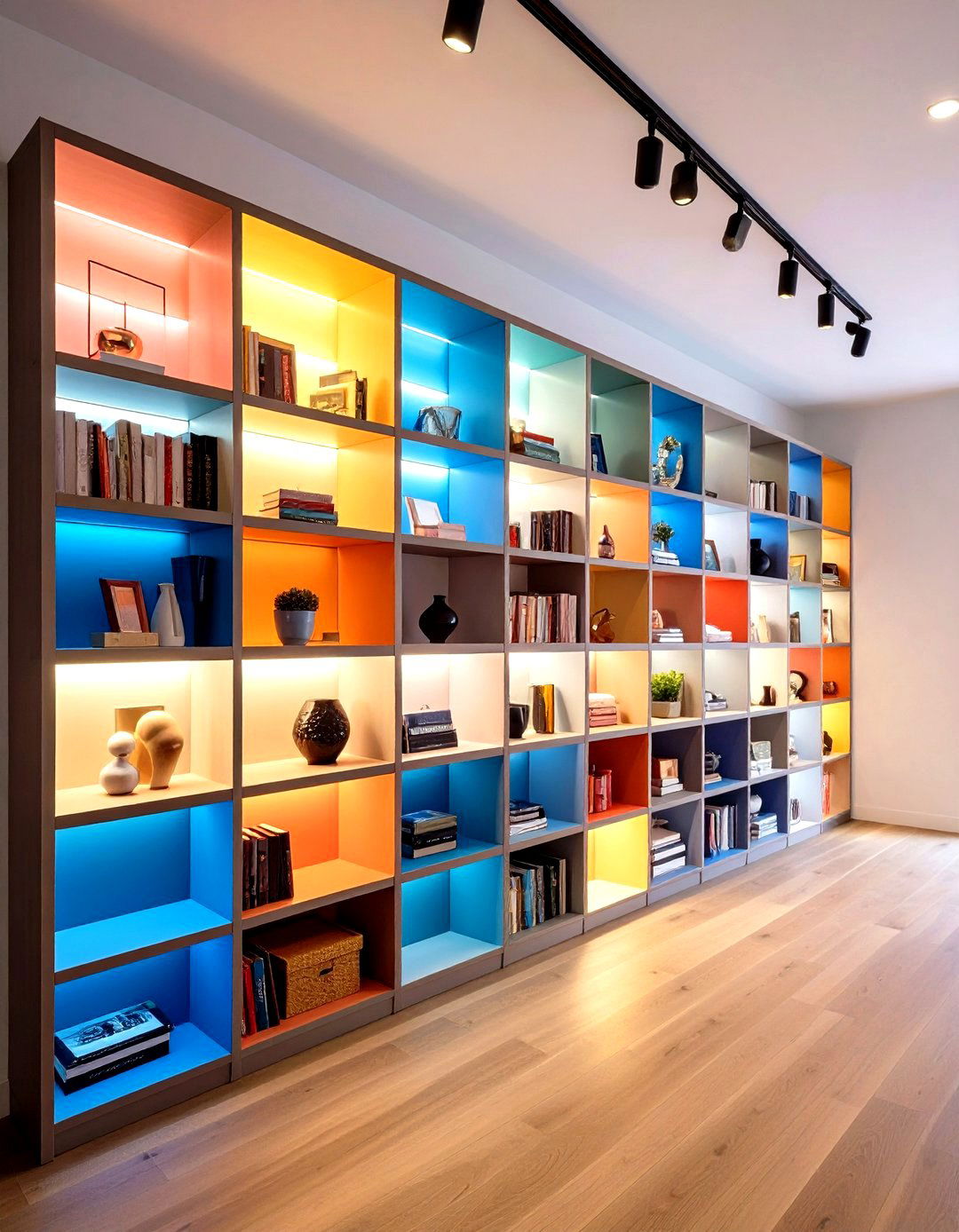
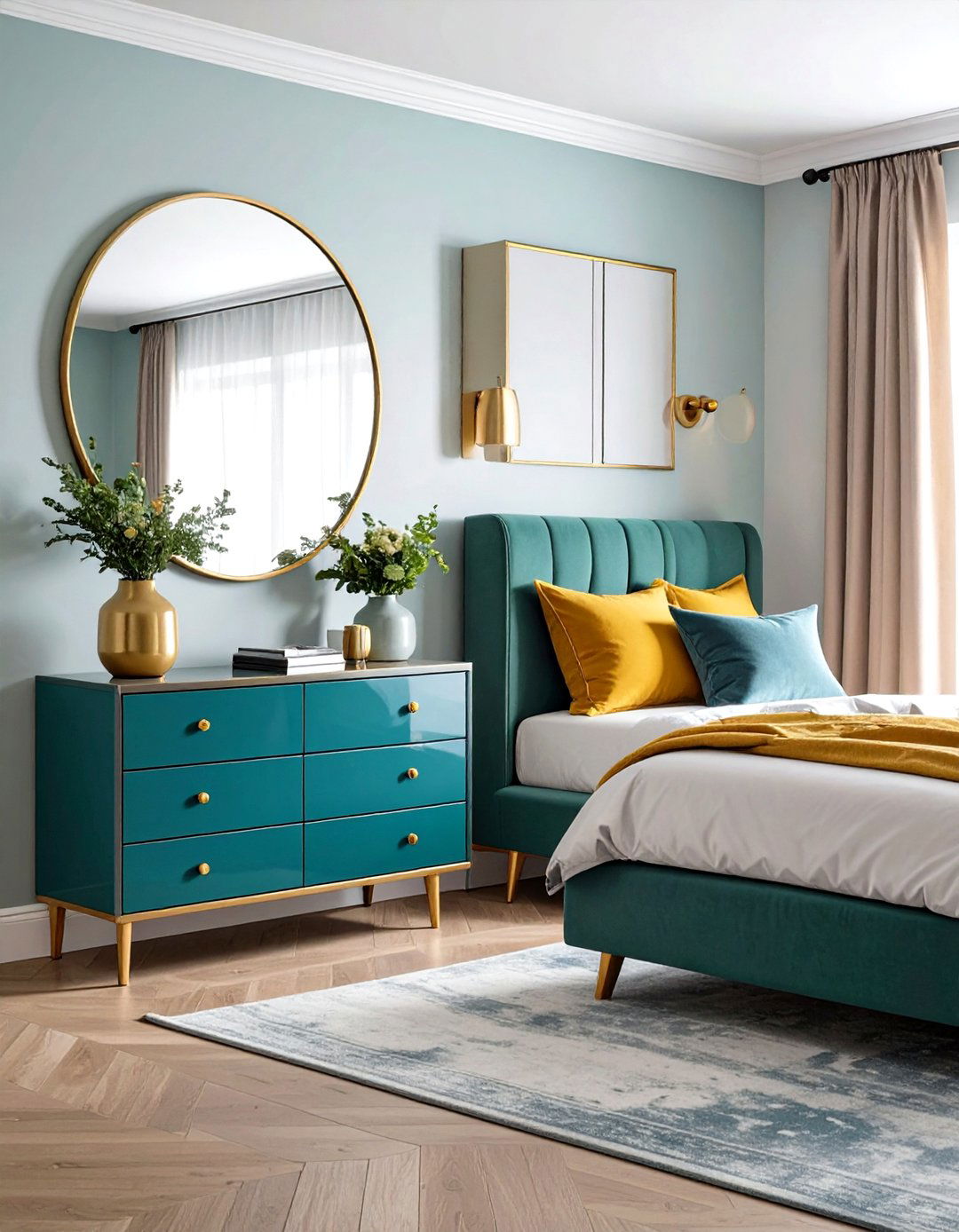
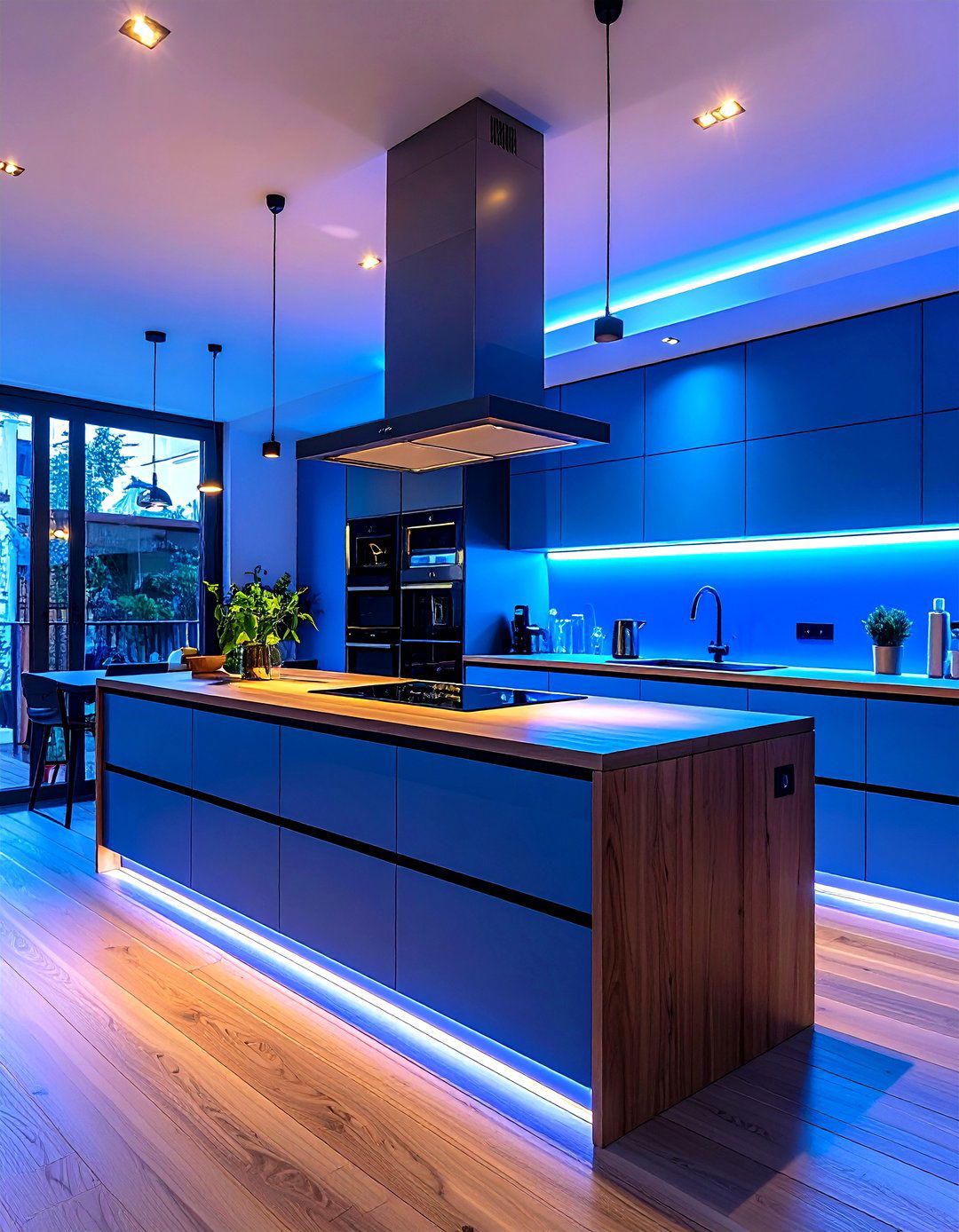
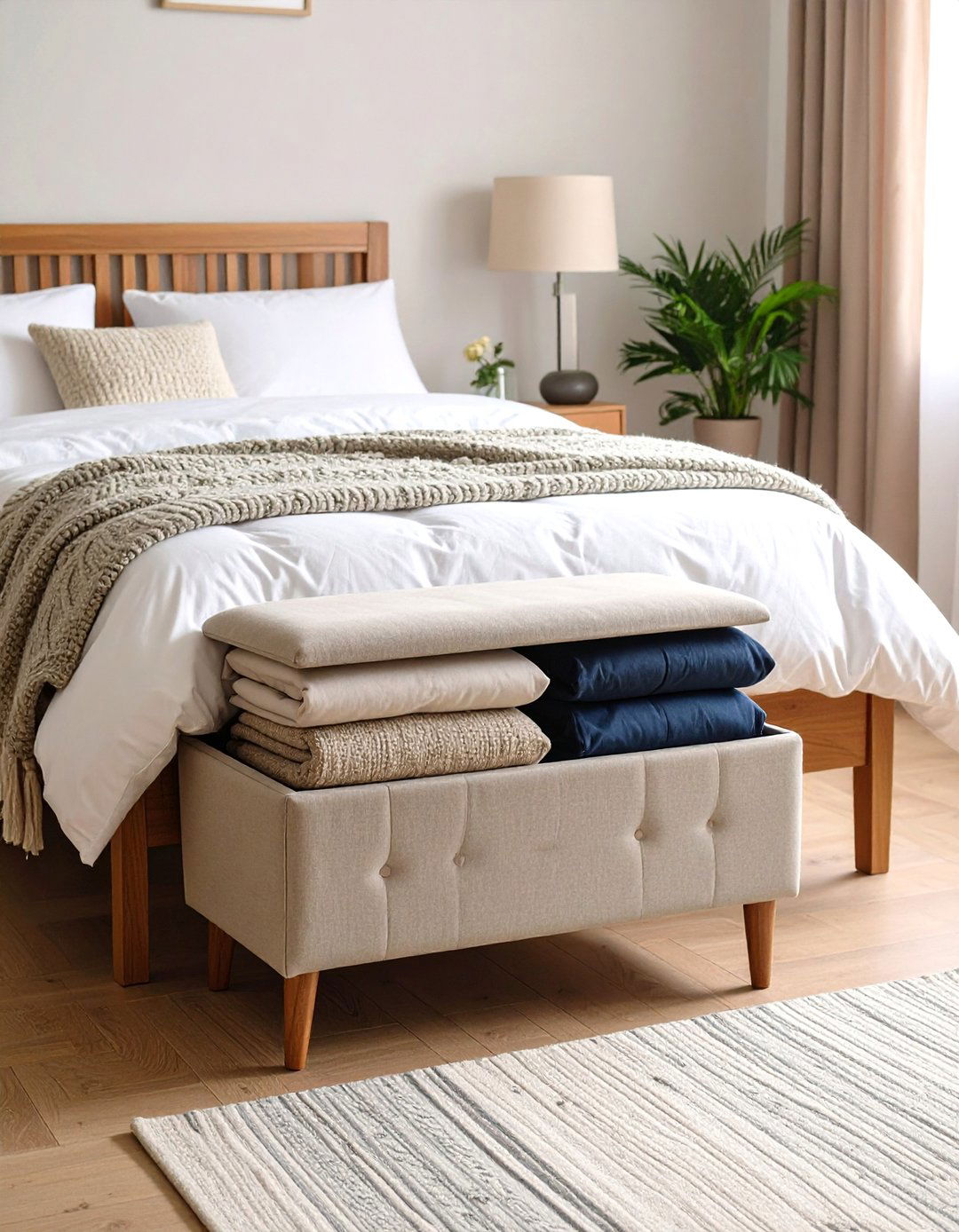
Leave a Reply